CURRAHEE WILDFLOWERS
6/13/20
A hike to the top of Currahee Mountain last Sunday surprised me with an extraordinary diversity of flowers. The flowers showed well the relationship between soils developed on felsic versus mafic rock, as well as the difference in flowers between forests and more sunlit areas.
Currahee Mountain is an isolated peak (the name itself means “We stand alone”), held up by a resistant ridge of granitic gneiss. This gneiss is well-exposed at the top, at least where it isn’t covered by graffiti, and it is what makes the final part of the trail so steep. Gneiss is a felsic metamorphic rock, composed mostly of of feldspar and quartz. It makes for relatively poor acidic soils.
About midway up the trail from the parking lot are a series of valleys and small ridges, all underlain by amphibolite bedrock. Amphibolite is also a metamorphic rock, but one composed mostly of amphibole and plagioclase feldspar, with little quartz. It creates rich and more alkaline soils. It is also more susceptible to weathering and erosion, which is why it forms the valleys and not the peak of the mountain.
Indian Pink (Spigelia marilandica, also called Pink Root). Indian Pink prefers mafic or limestone bedrock, and is found along the amphibolite-valleys part of the trail.
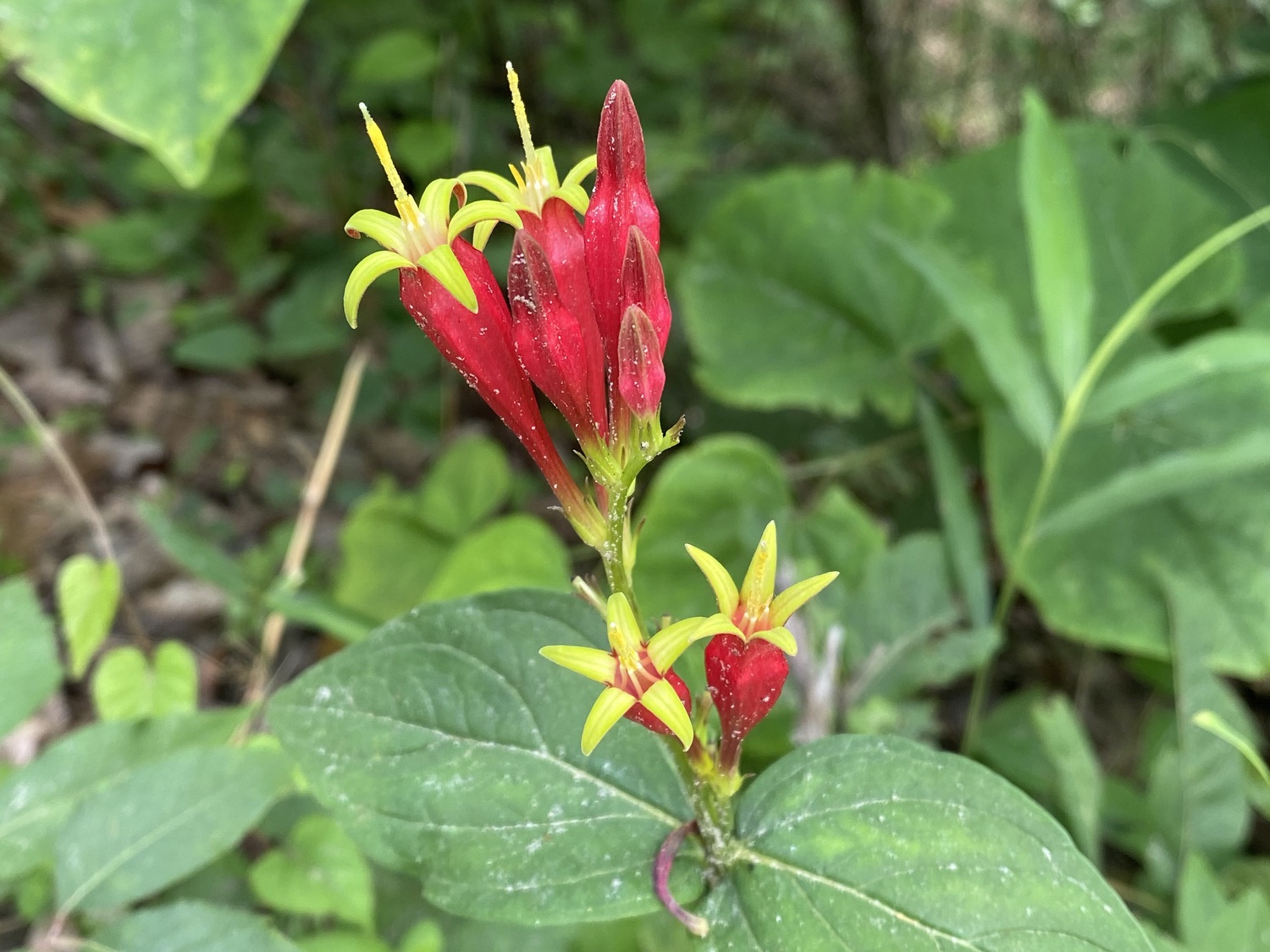
Sweet Shrub (Calycanthus floridus, also called Carolina Allspice). This shrub has large alternate leaves with reddish-maroon flowers.
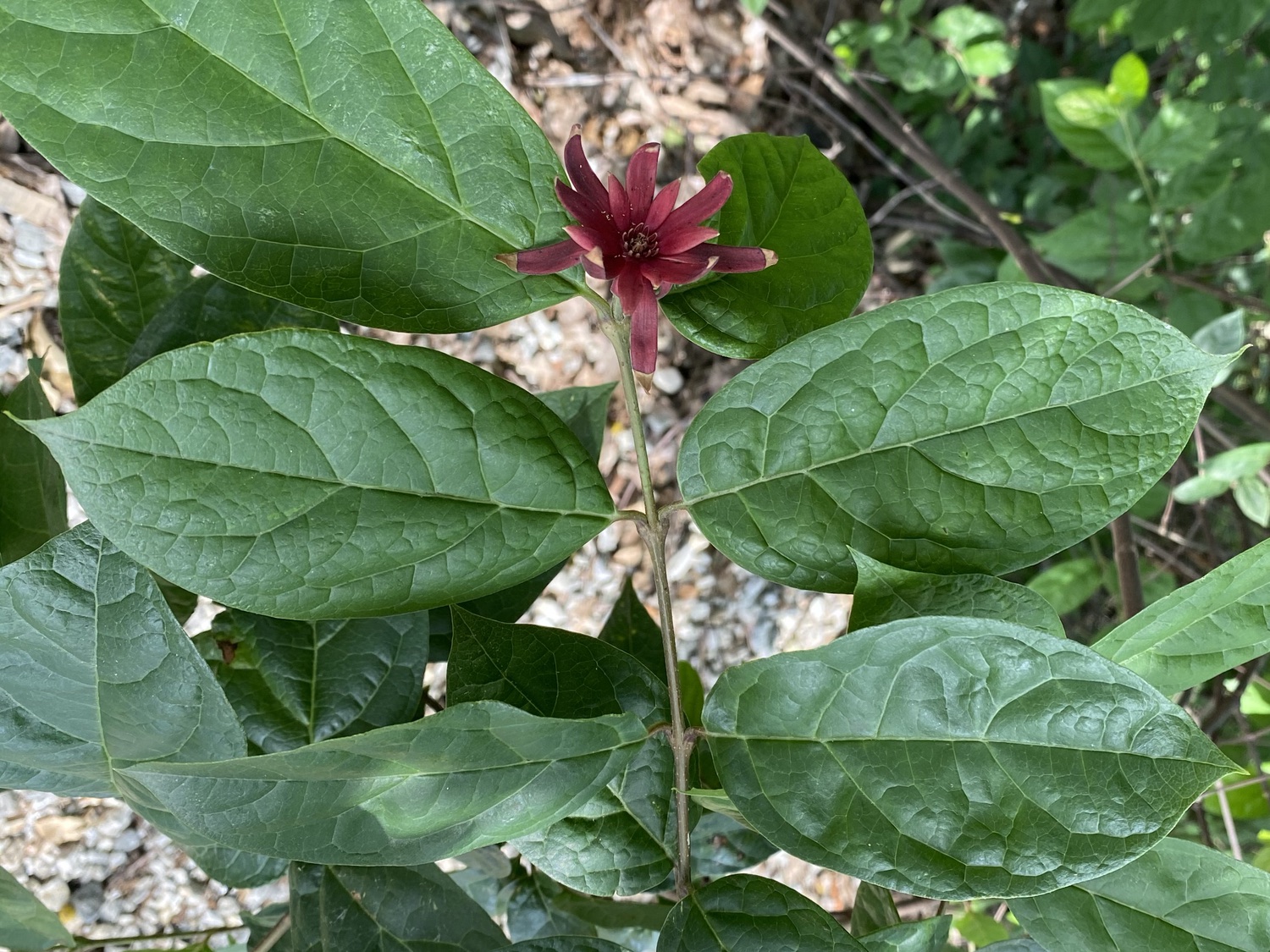
Trumpet Creeper (Campsis radicans). Blooms of Trumpet Creeper lie on the road, having fallen from vines in the canopy. The similar flower of Cross-Vine has yellow lobes inside the flower.
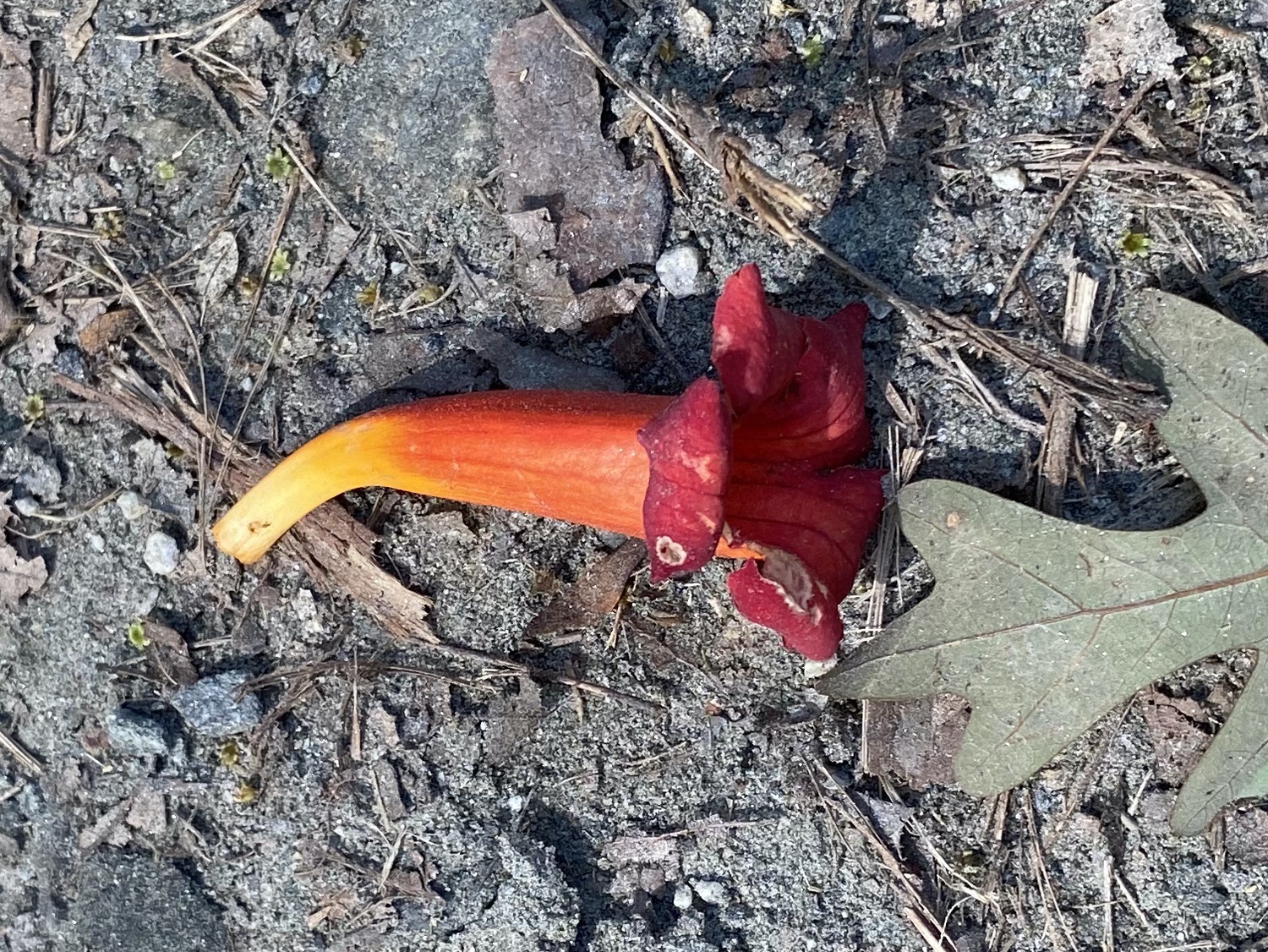
Butterfly Weed (Asclepias tuberosa). Butterfly weed is common in dry clearings, and it is common near the top of the trail.
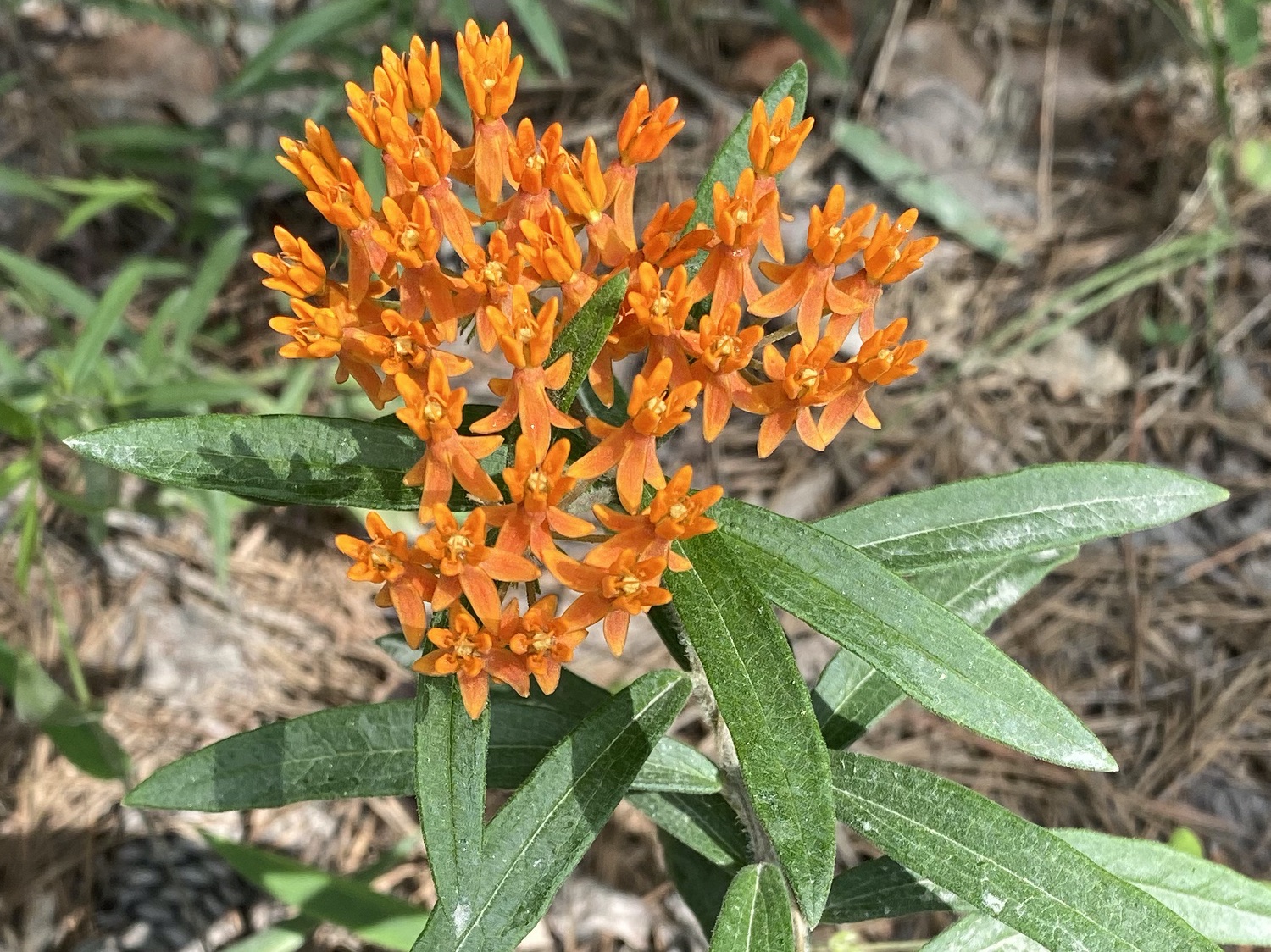
Tall Thistle (Cirsium altissimum)
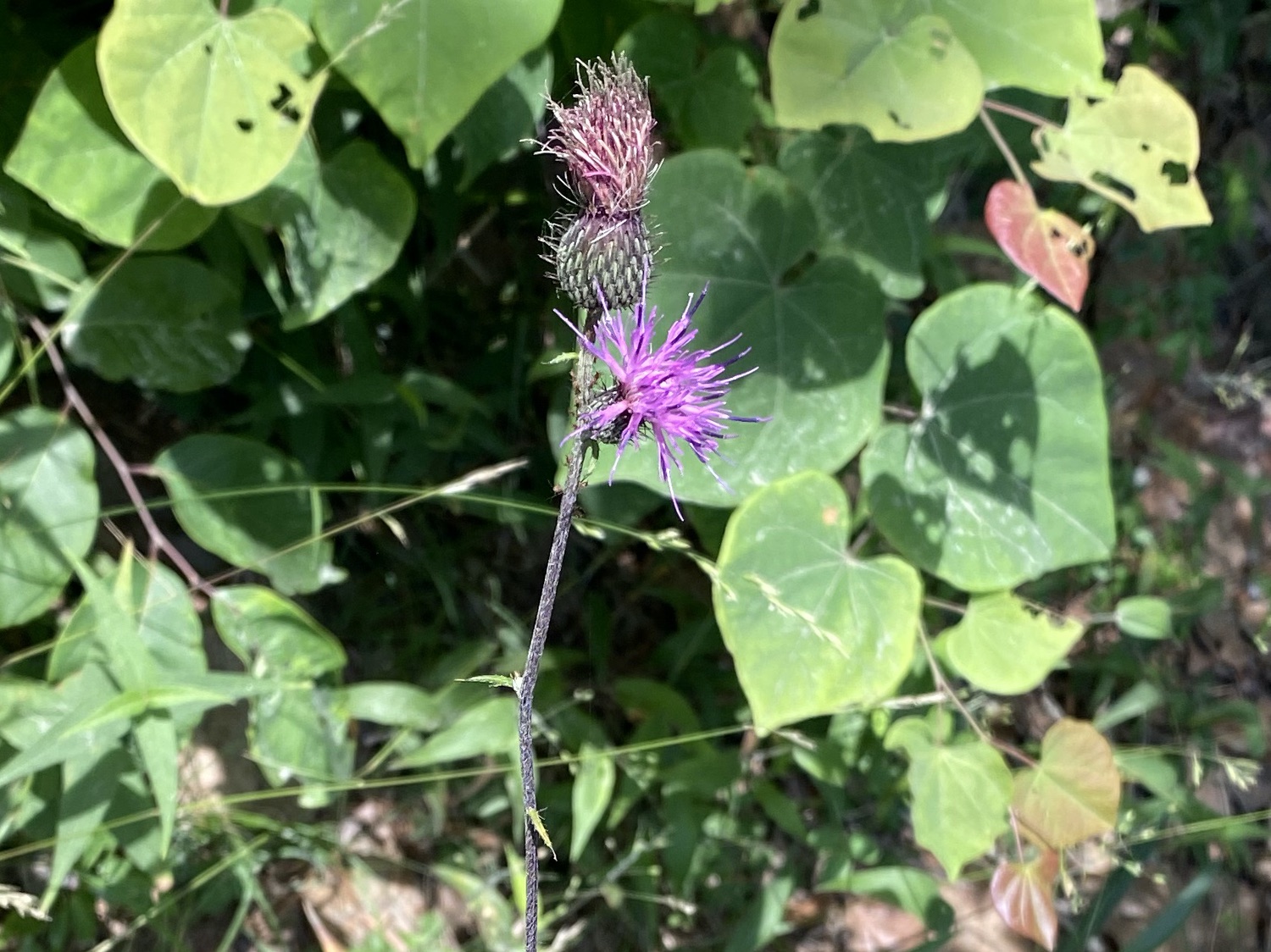
Northern Leatherflower (Clematis viorna). Northern Leatherflower is also found along the amphibolite-valleys part of the trail.
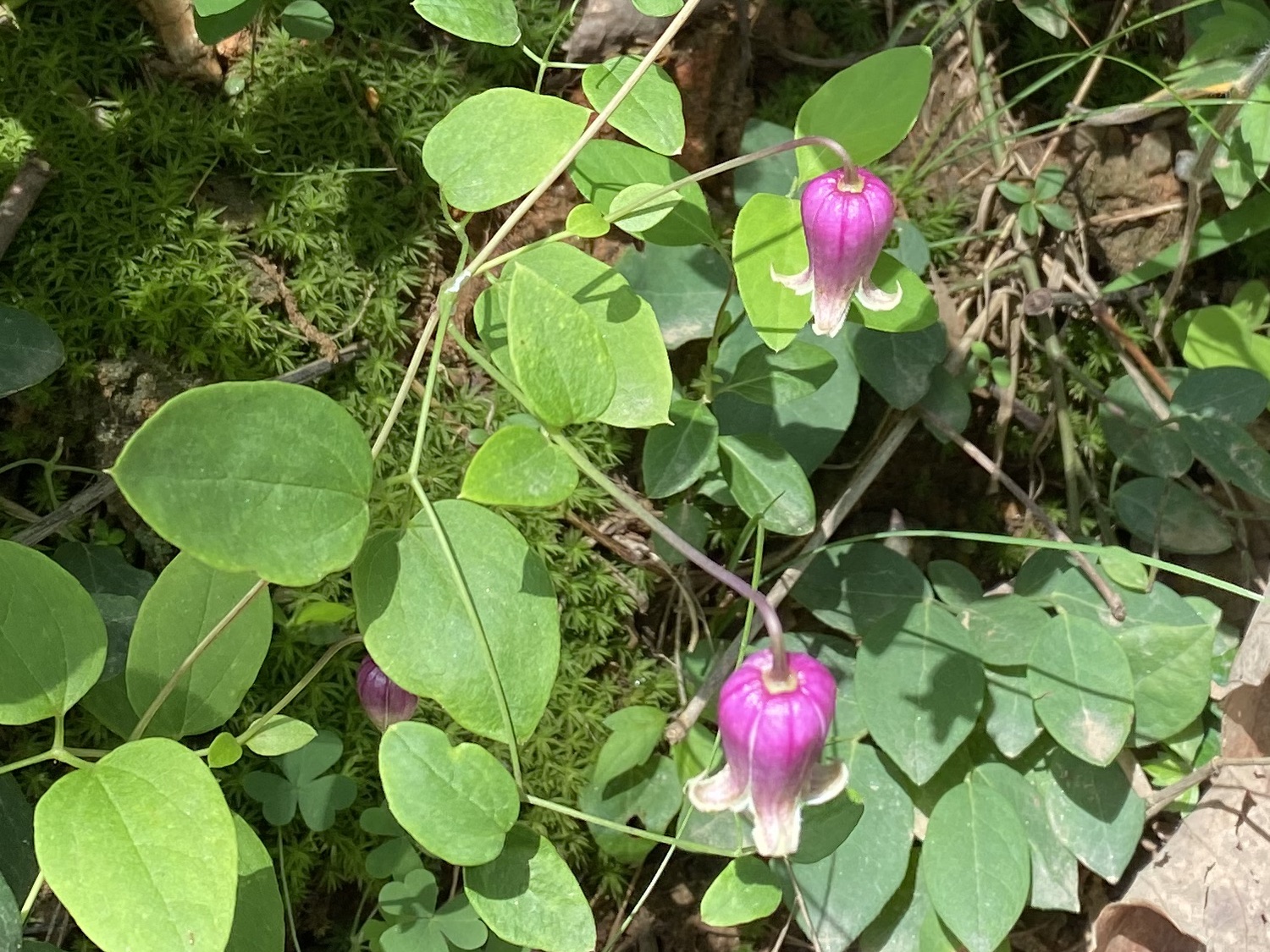
Meadow Phlox (Phlox maculata var. pyramidalis)
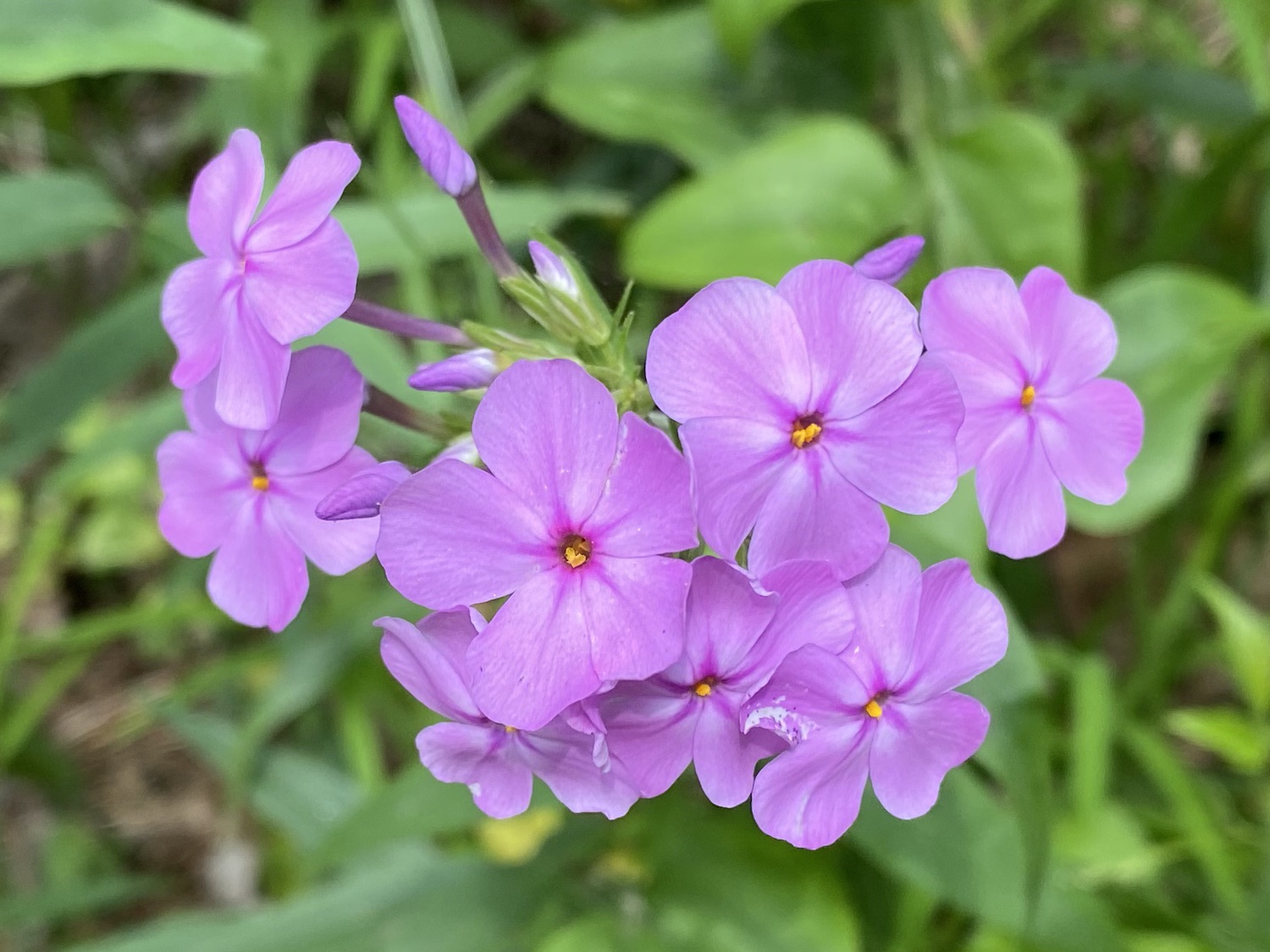
Carolina Rose (Rosa carolina)
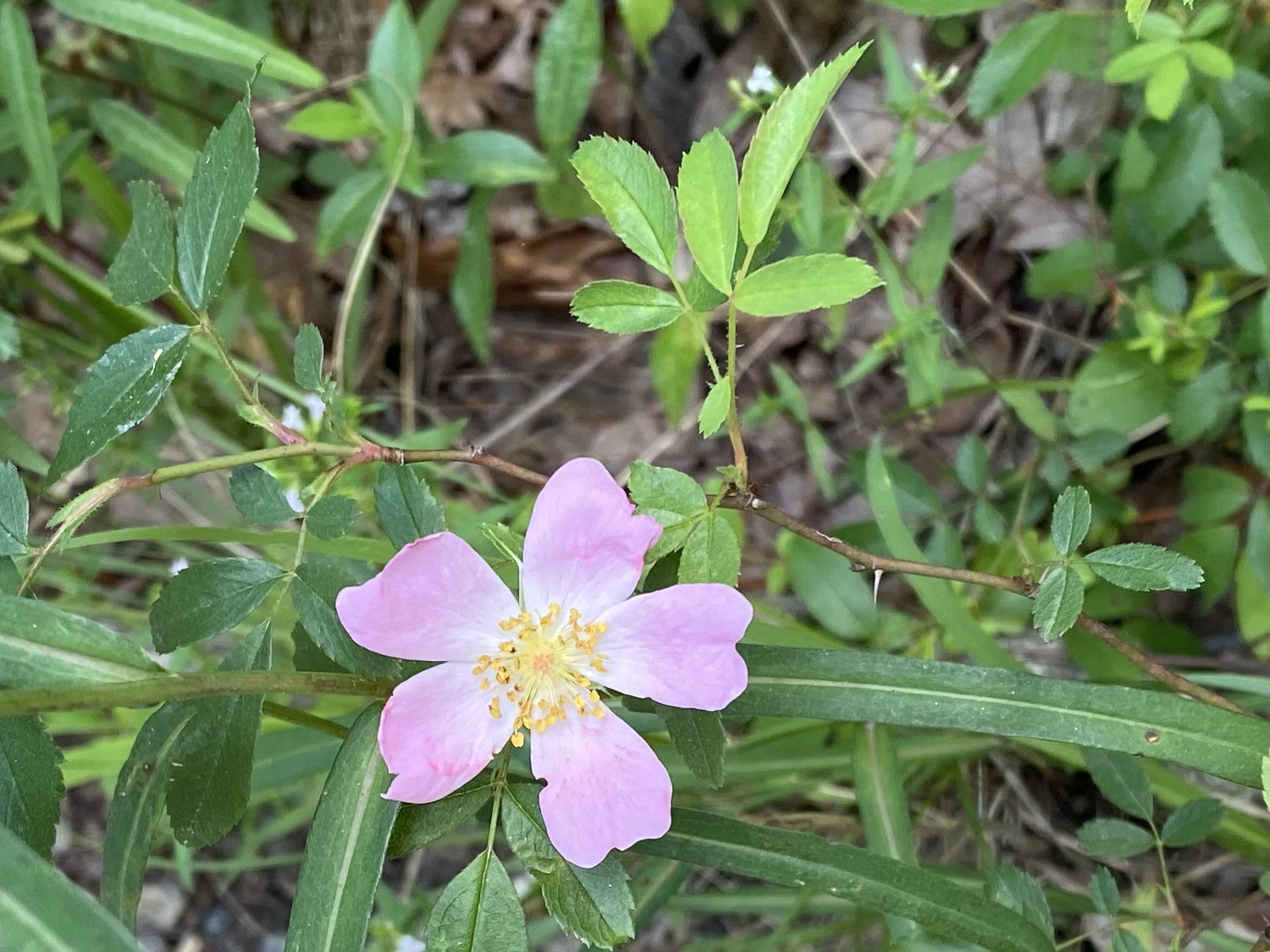
Sensitive Brier (Mimosa microphylla)
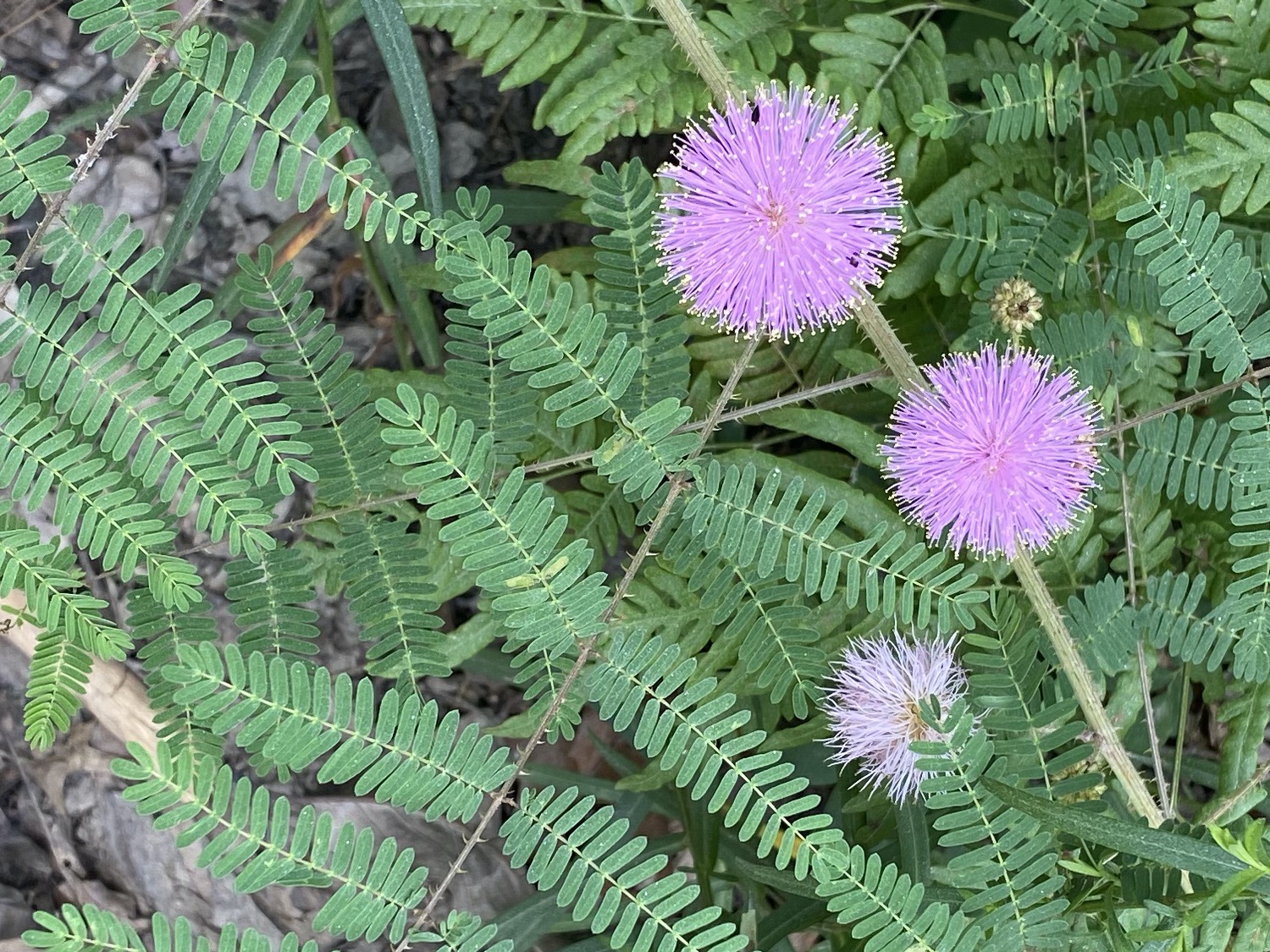
Pale Purple Coneflower (Echinacea pallida)
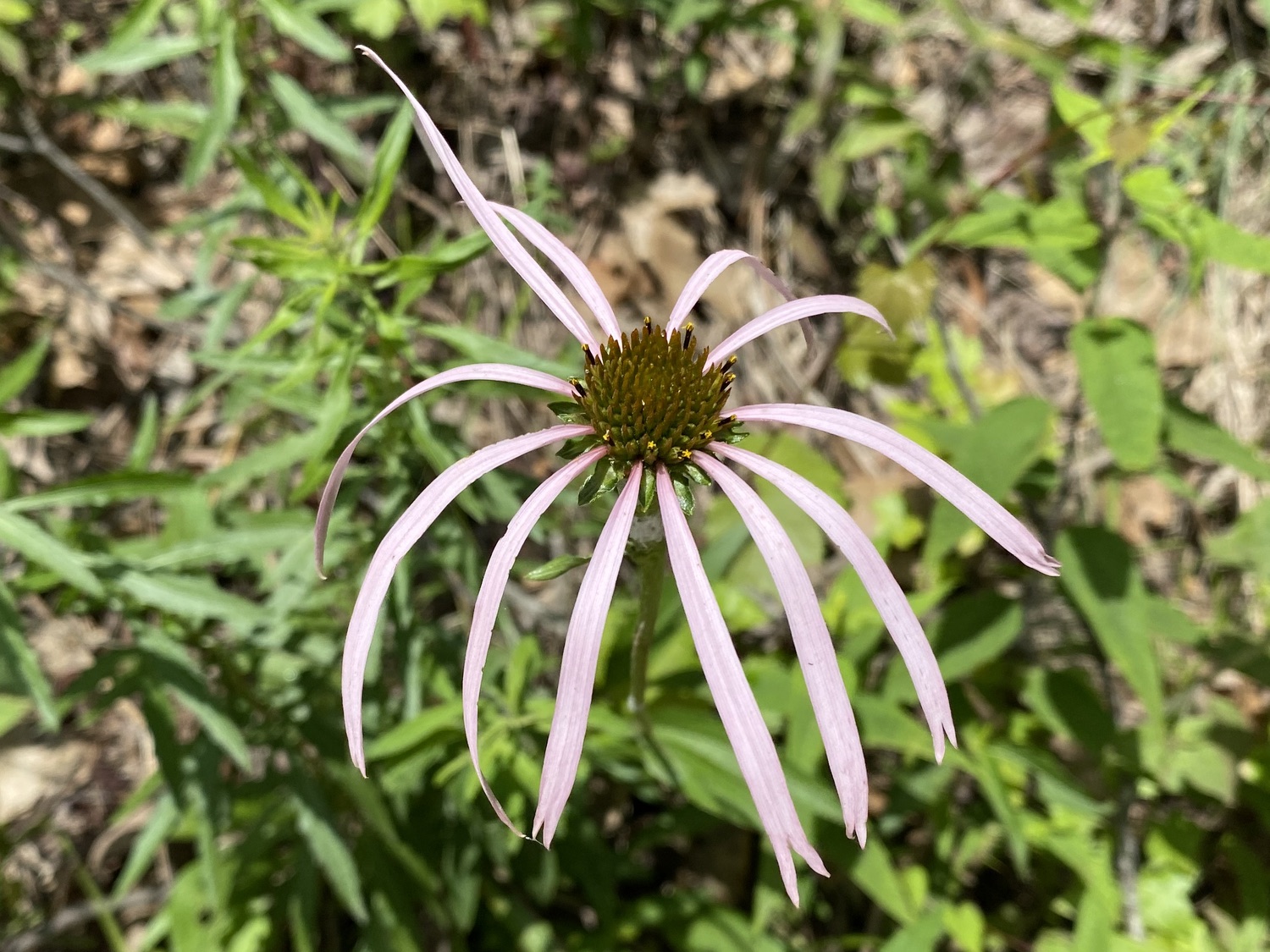
Virginia Goat’s Rue (Tephrosia virginiana)
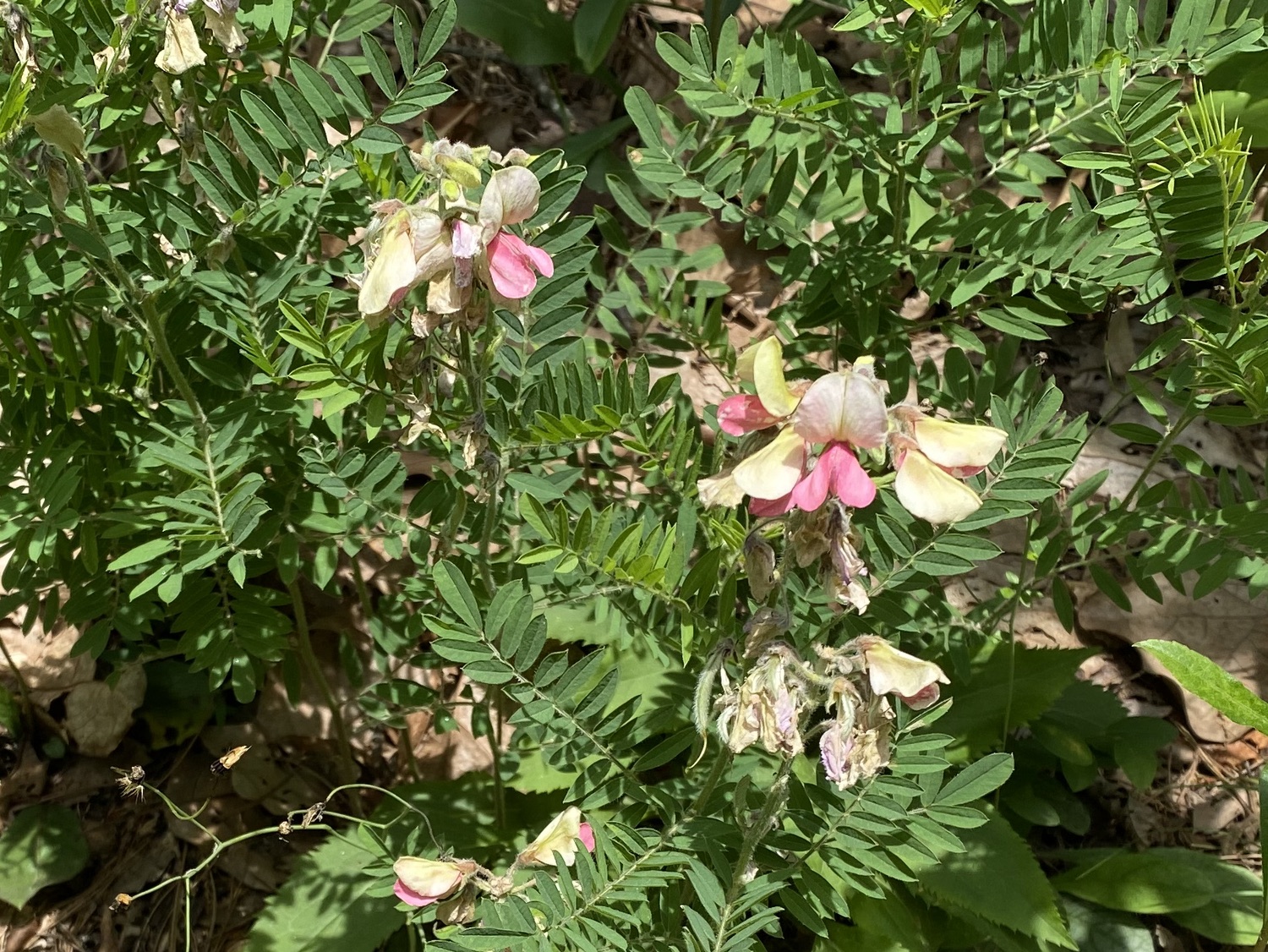
Smooth Spiderwort (Tradescantia ohiensis)
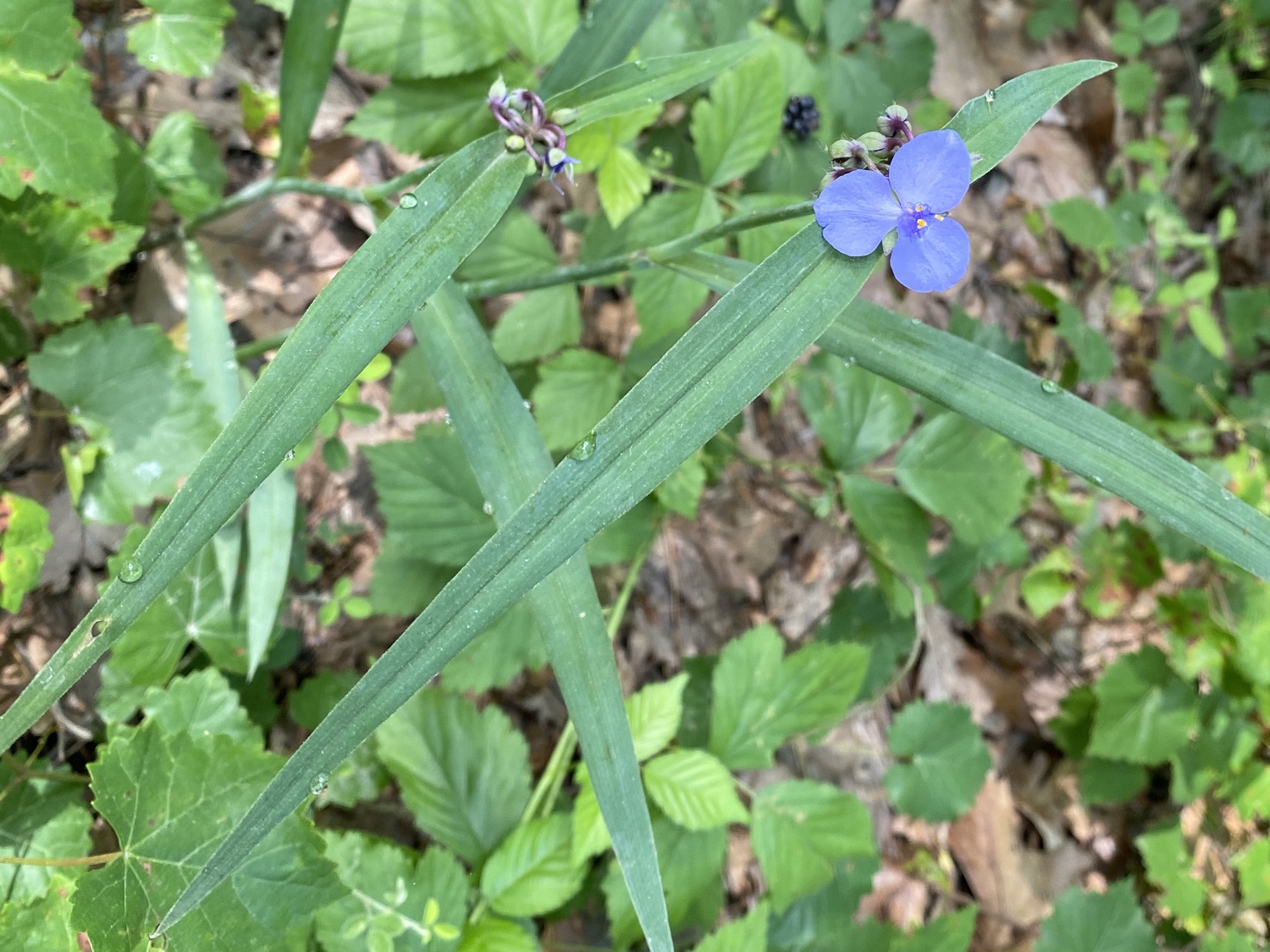
Woodland Coreopsis (Coreopsis major). Woodland Coreopsis is best recognized by its leaves: they look like a circlet of six leaves, but are actually two opposite leaves, each deeply divided into three lobes.
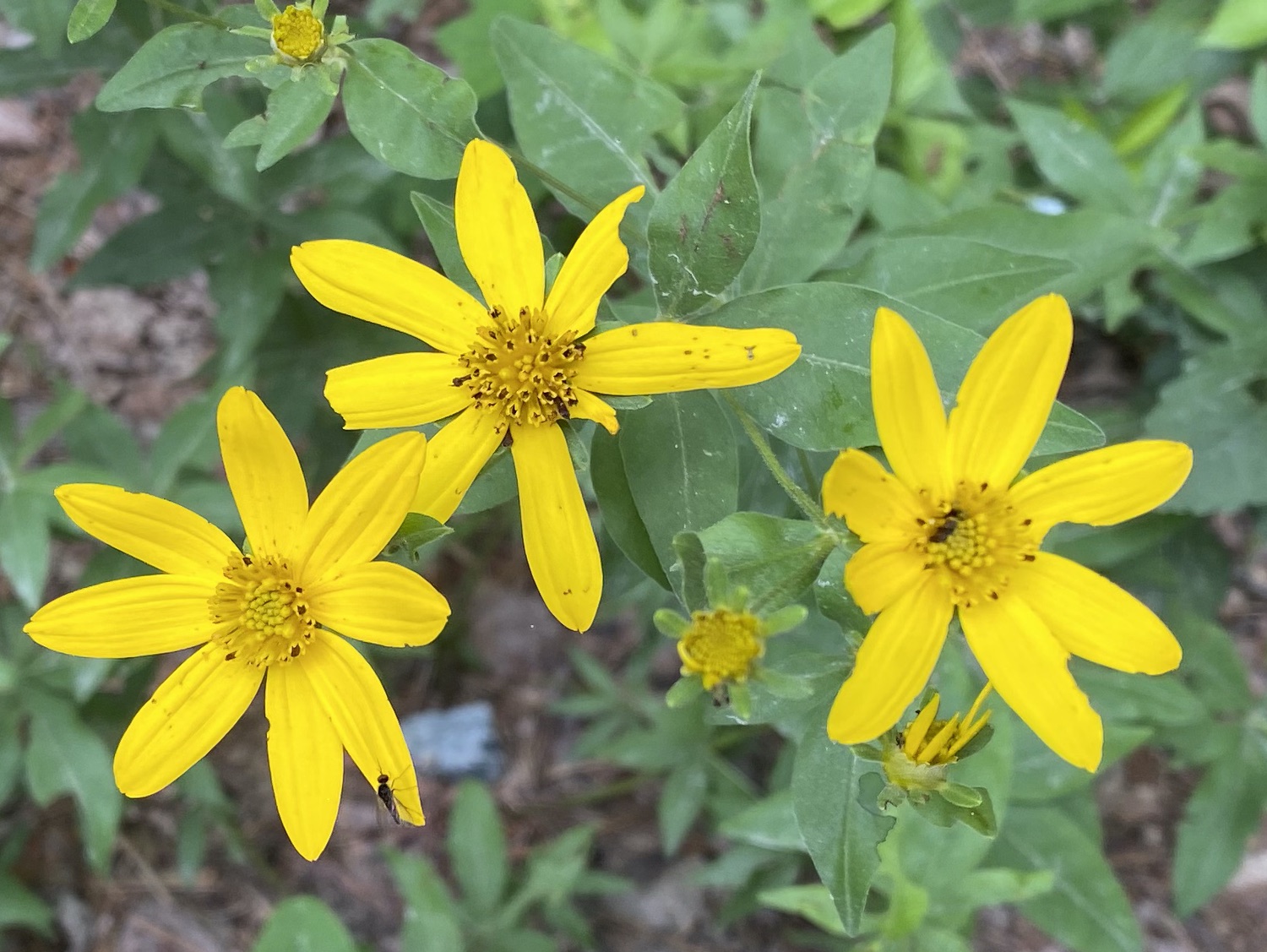
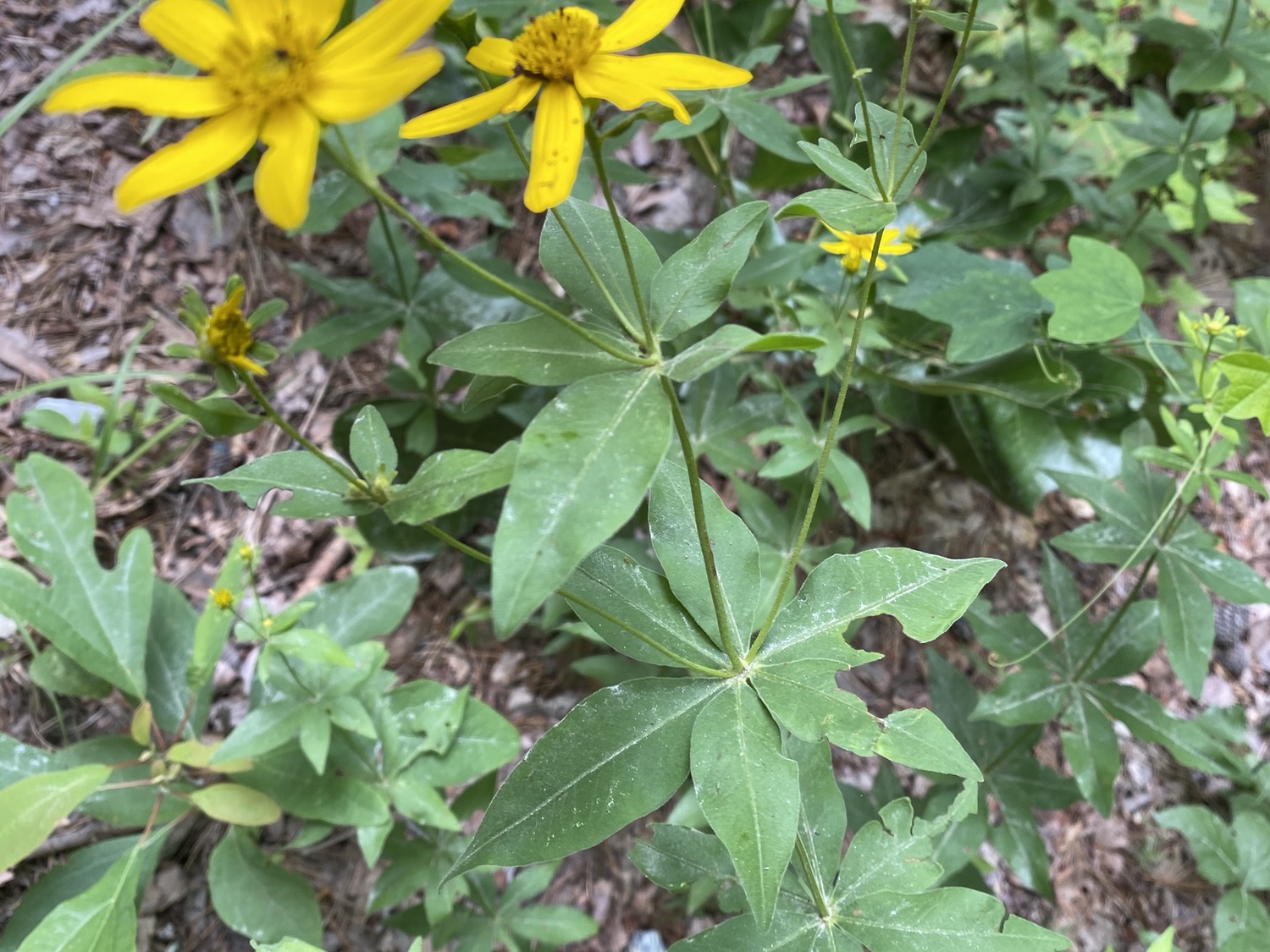
Black-Eyed Susan (Rudbeckia hirta)
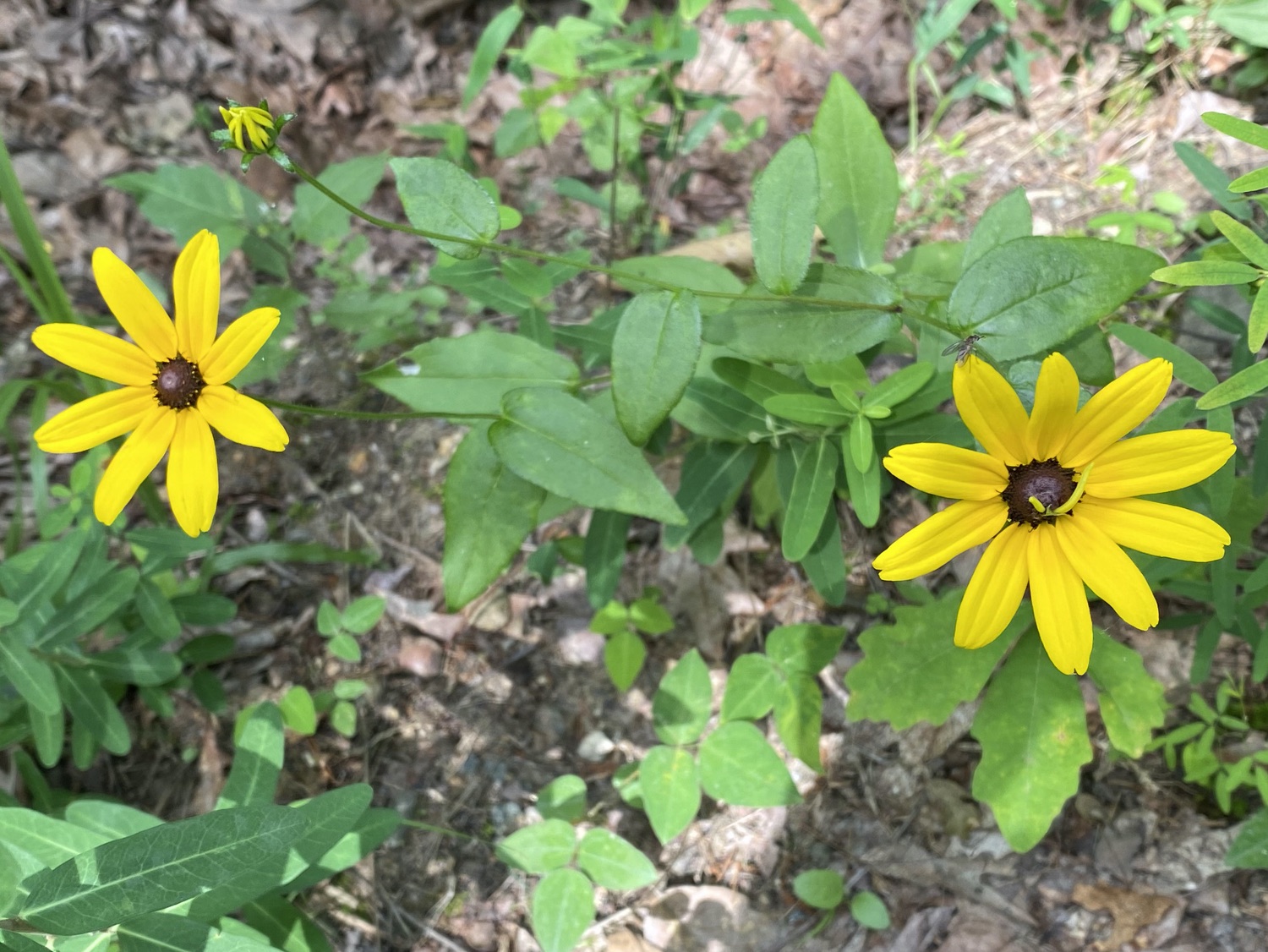
Rudbeckia (Rudbeckia sp.). This looks like a Rudbeckia in the flowers and in the alternate leaves, but the center is pink rather than brown.

Southern Sundrops (Oenothera fruticosa)
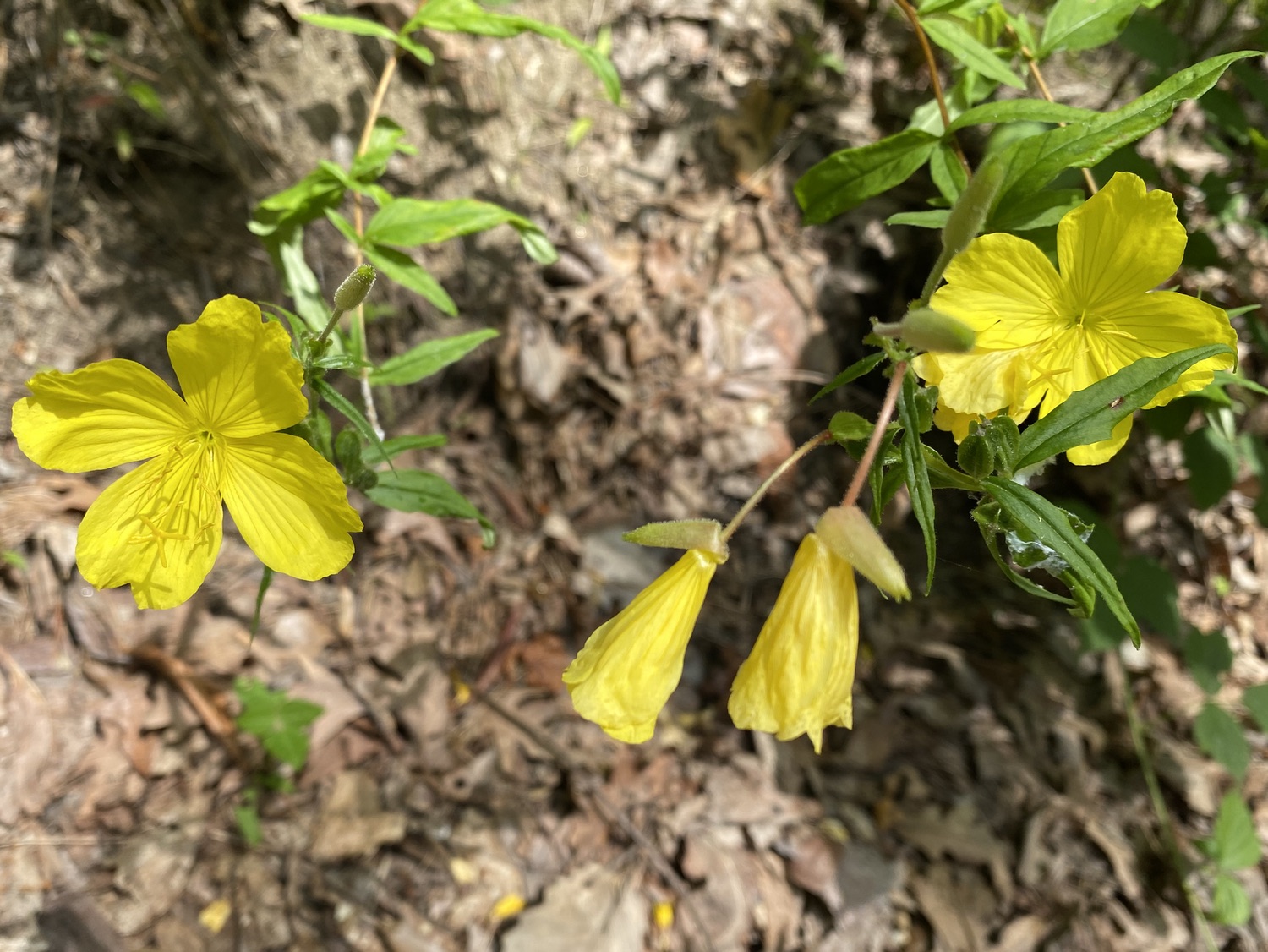
Yellow Star-Grass (Hypoxis hirsuta) has hairy grass-like leaves.
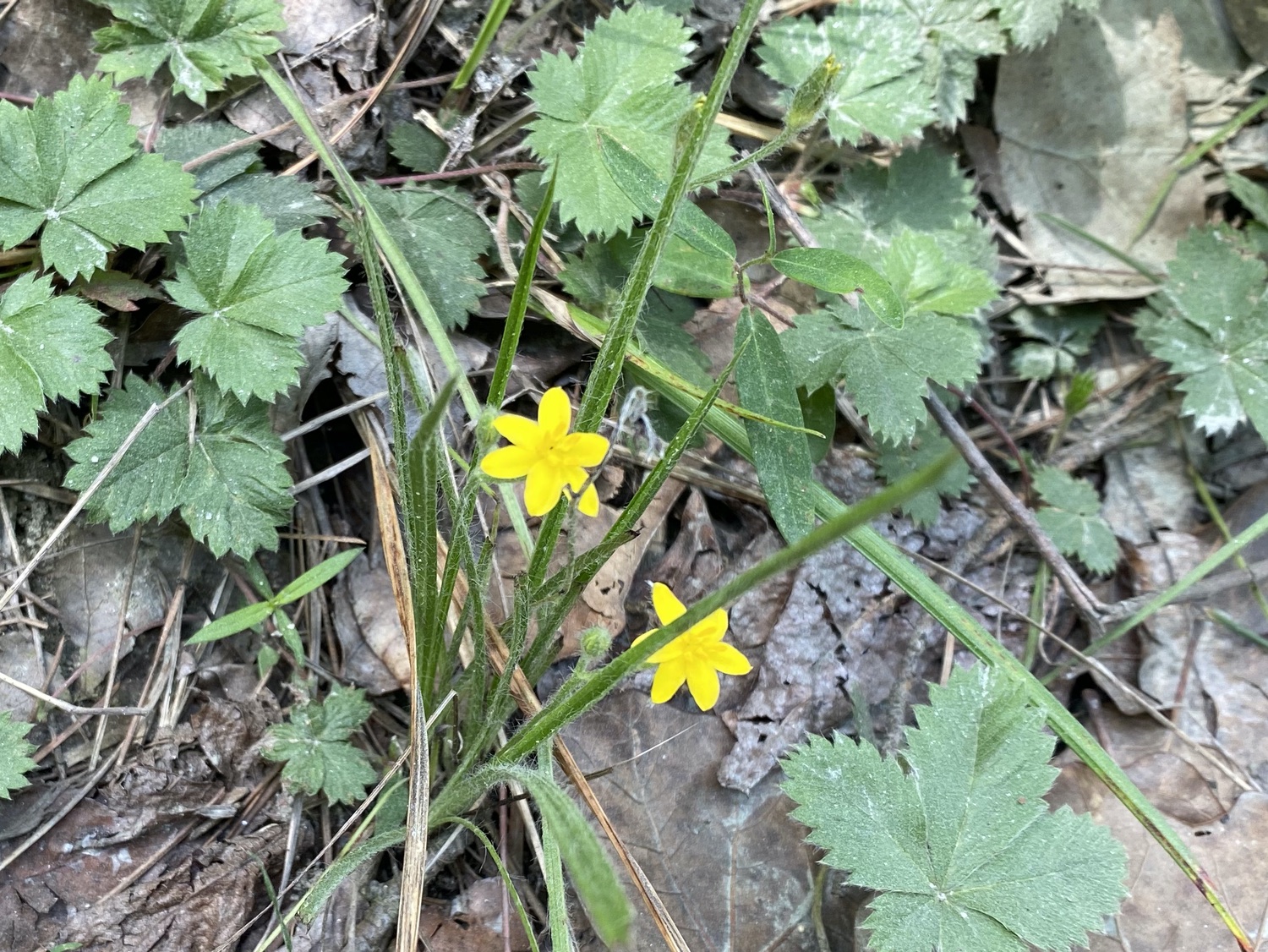
Pencil Flower (Stylosanthes biflora). Unfortunately, my photo of this cute little yellow flower is out of focus. The flower is only about ⅓" long, and the leaves are divided into three elliptical leaflets. This plant is low and spreading.
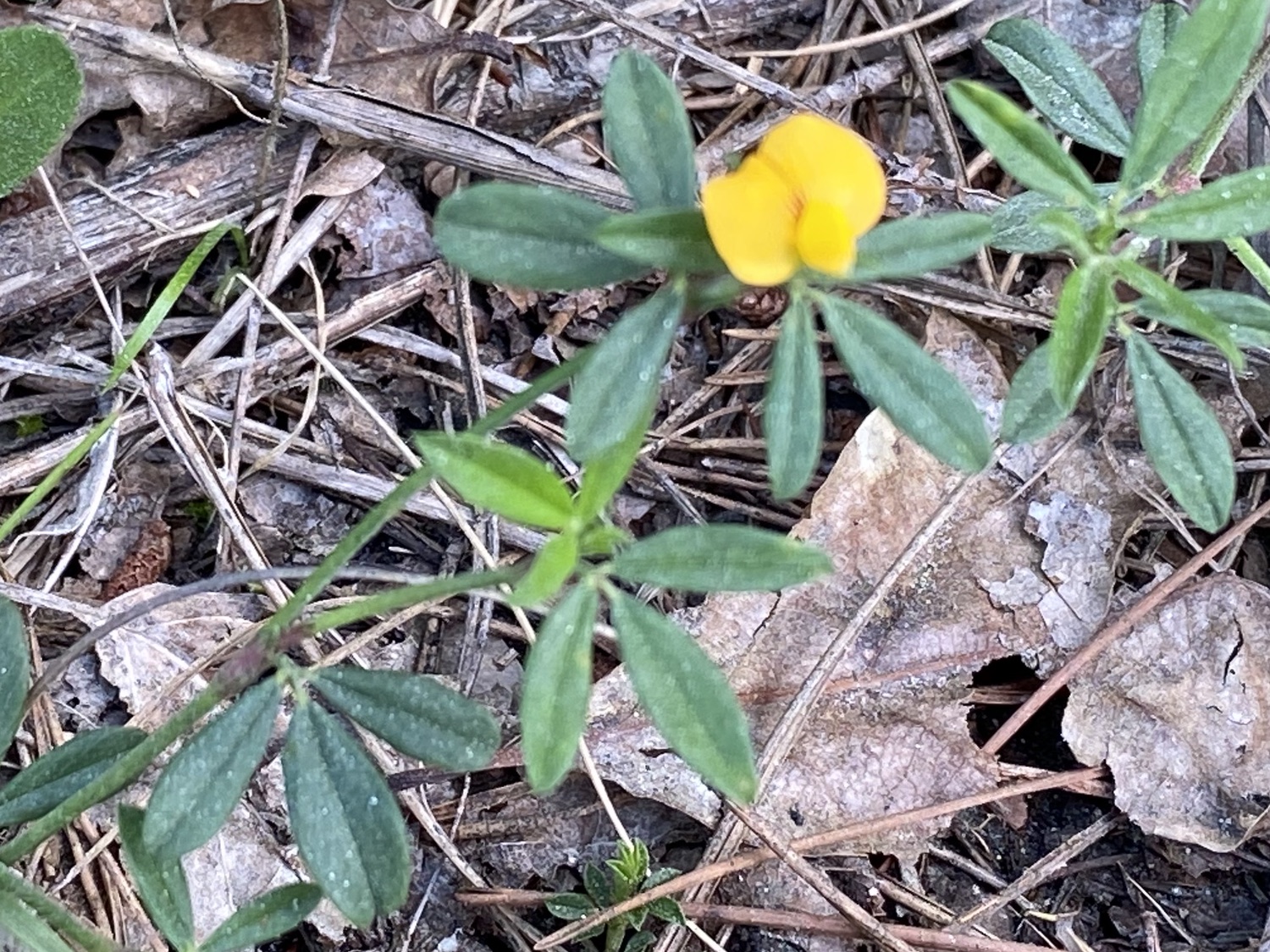
Hairy Cat’s-Ear (Hypochaeris radicata) is one of our dandelion mimics. It has long branching and often leafless stems, with a basal rosette of coarsely toothed leaves (lower left).
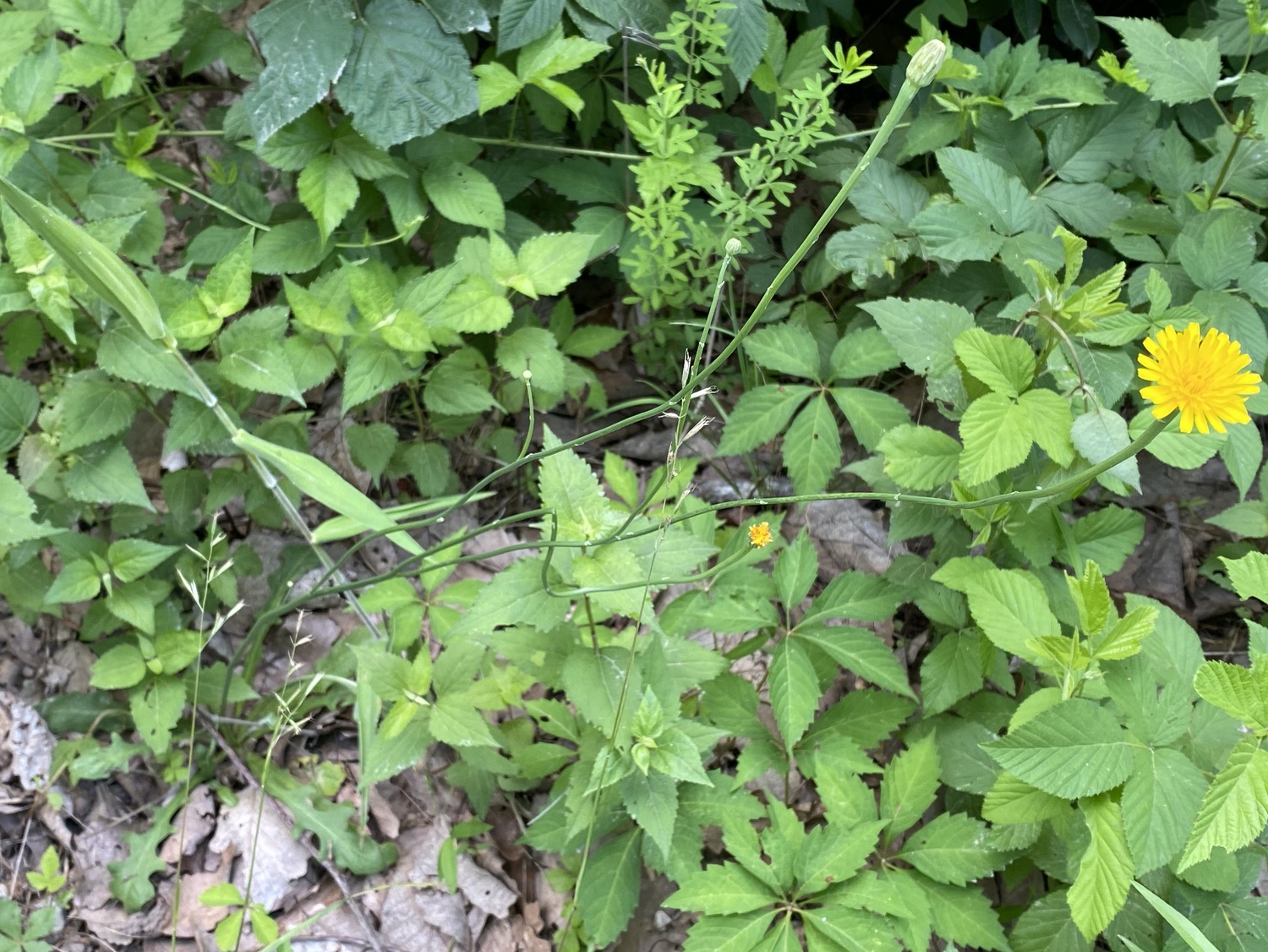
Queen Anne’s Lace (Daucus carota)
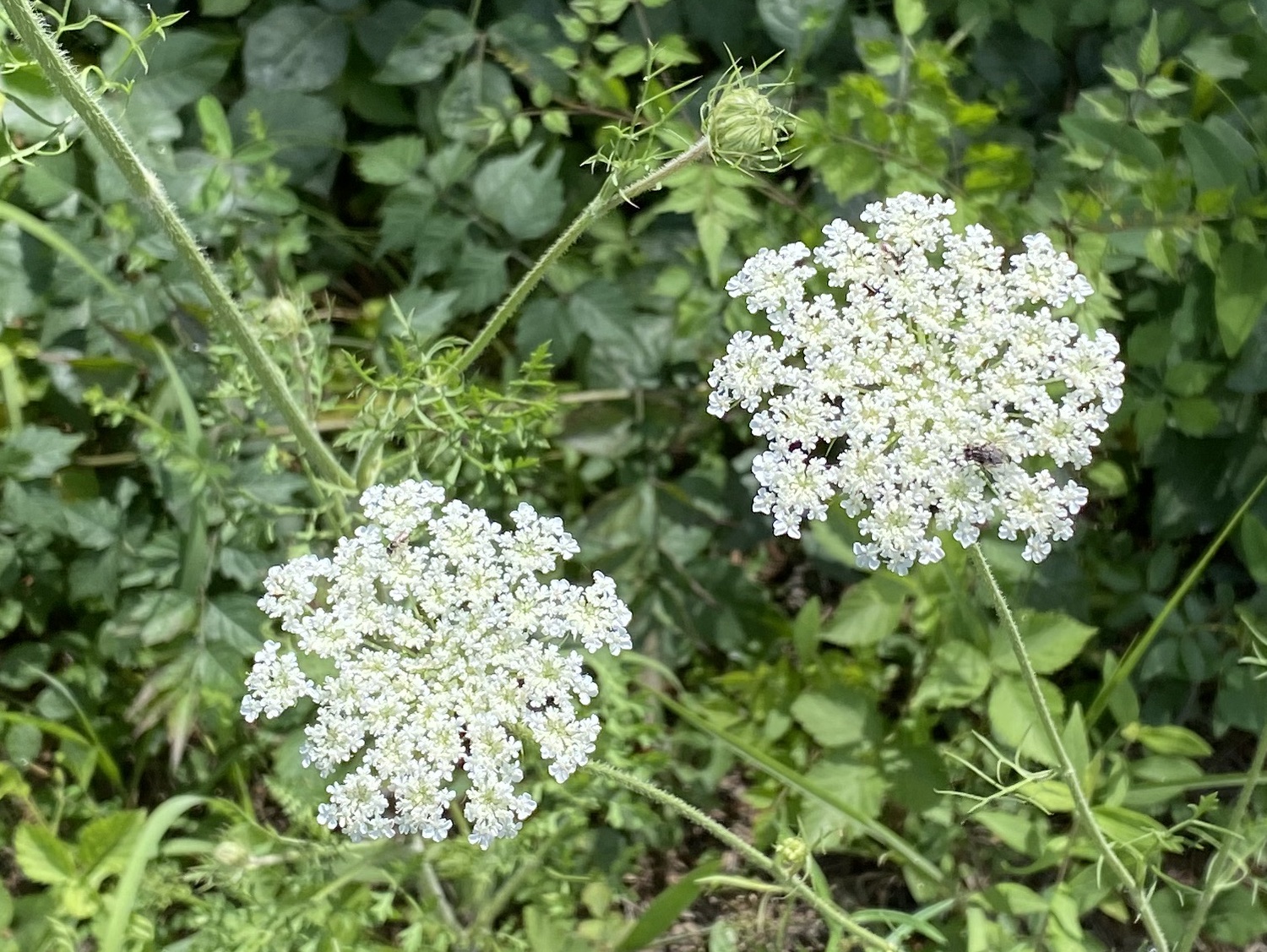
Common Morning Glory (Ipomoea purpurea). Despite the species name, I. purpurea can be white.
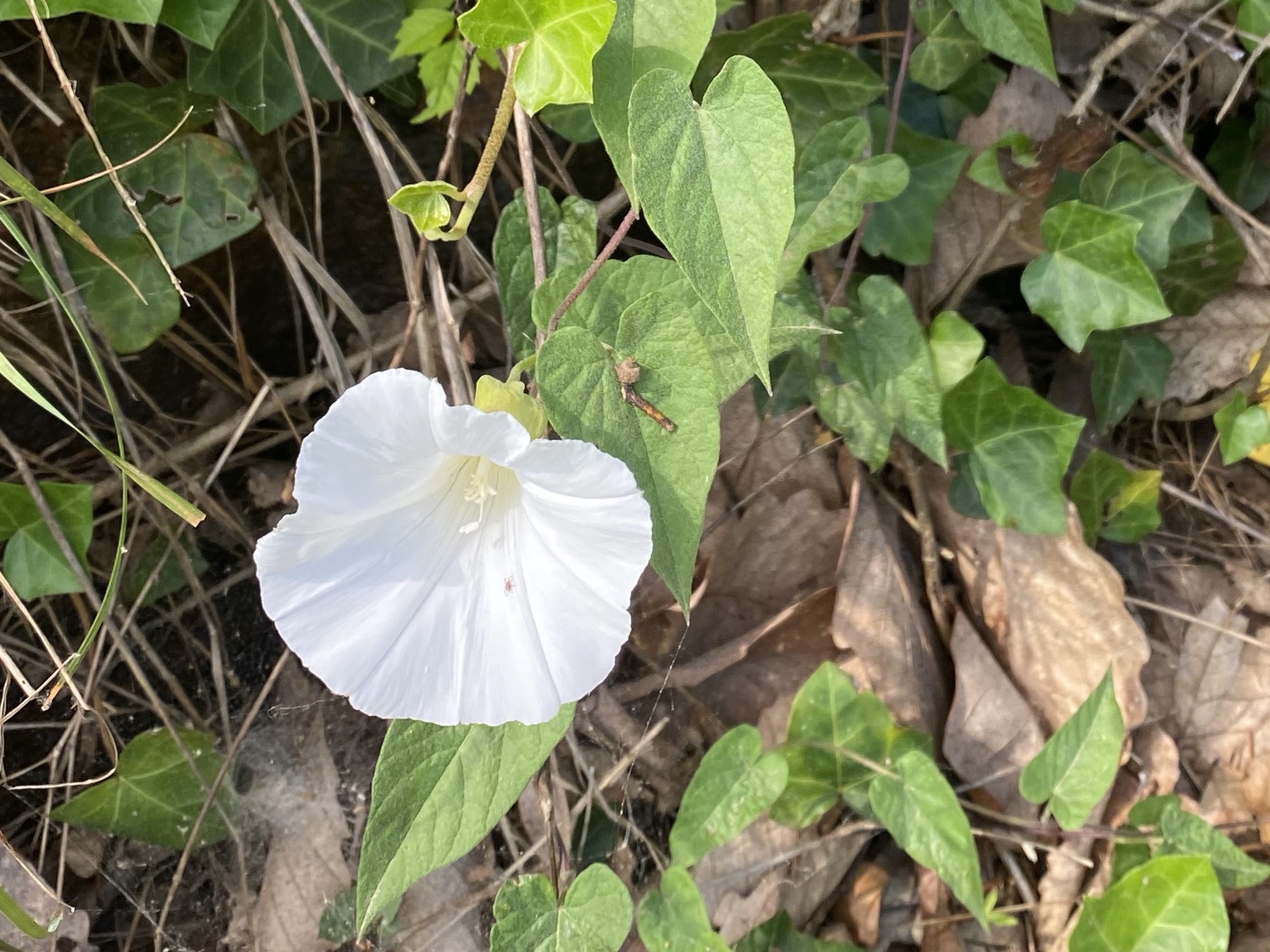
Rough Daisy Fleabane (Erigeron strigosus)
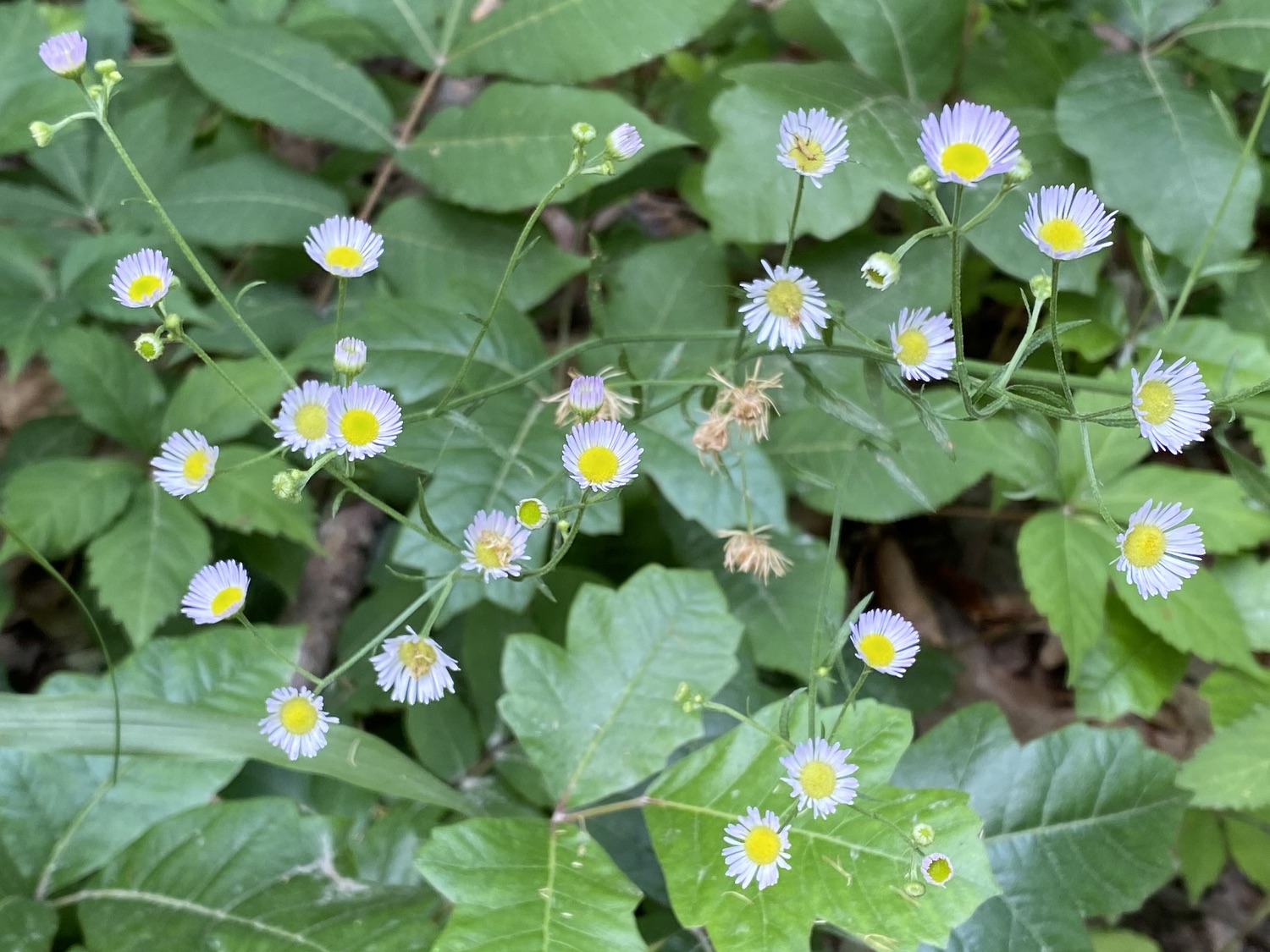
Basil Bee-Balm (Monarda clinopodia), also called White Bergamot
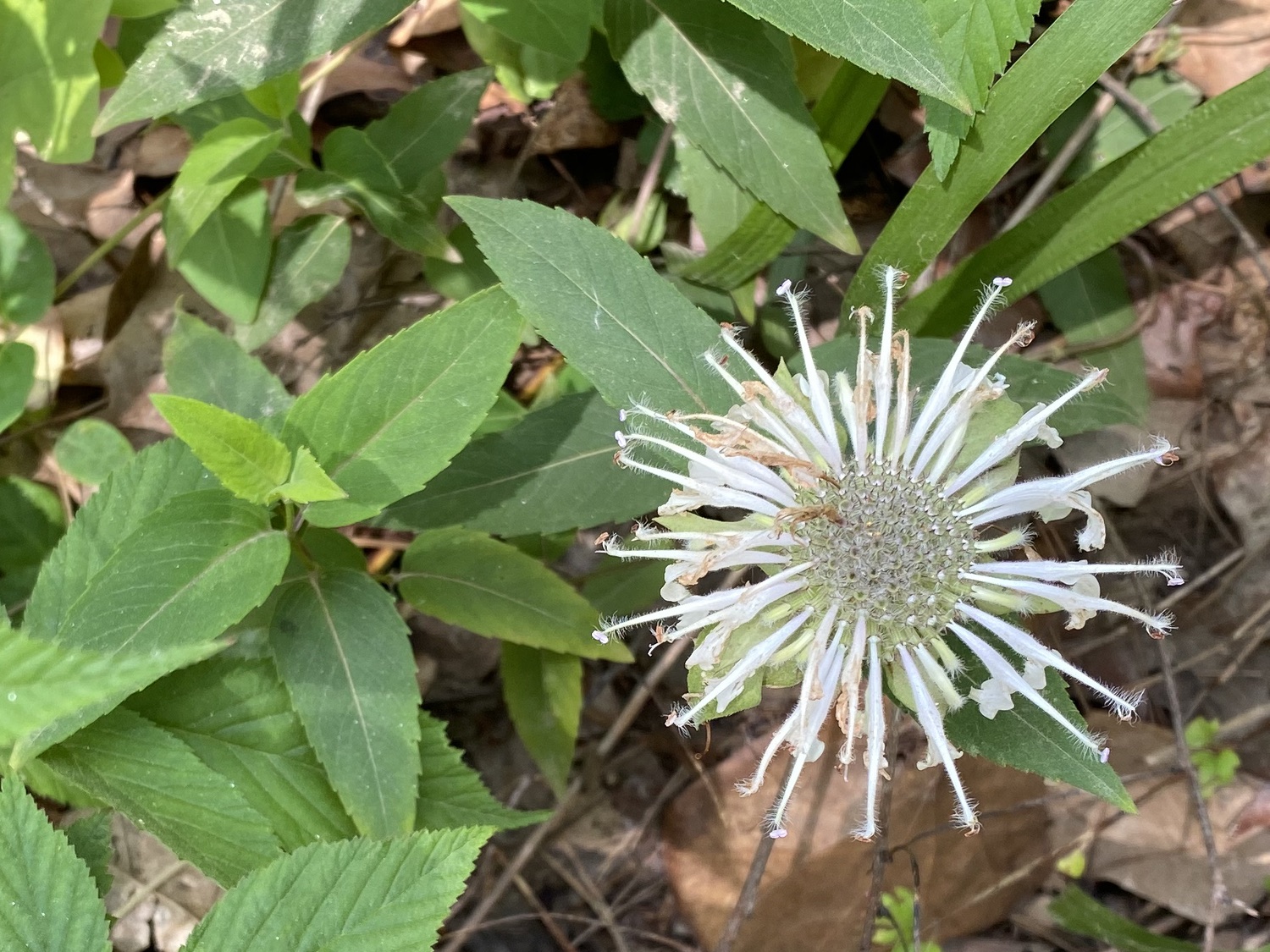
Wild Quinine (Parthenium integrifolium)
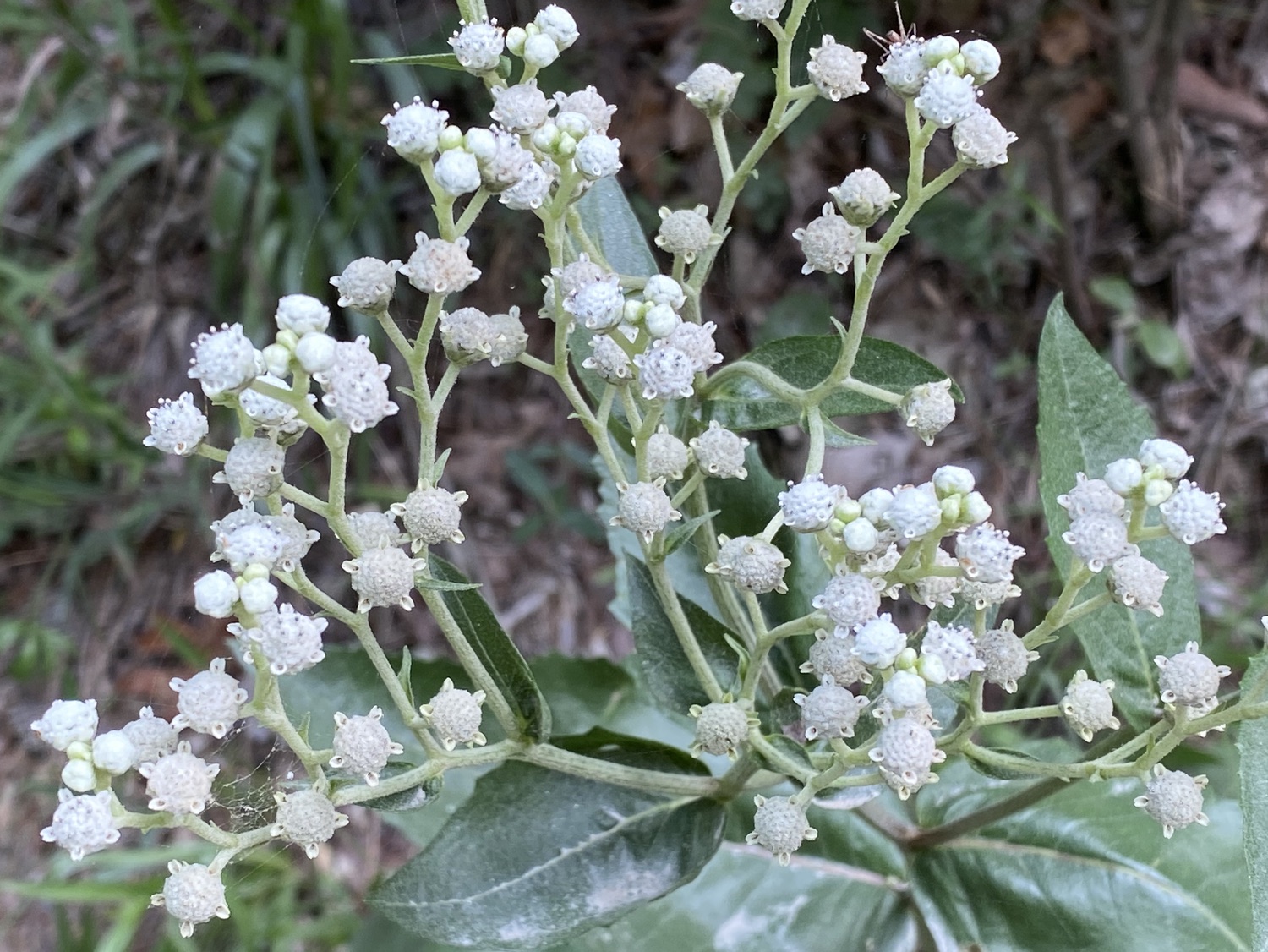
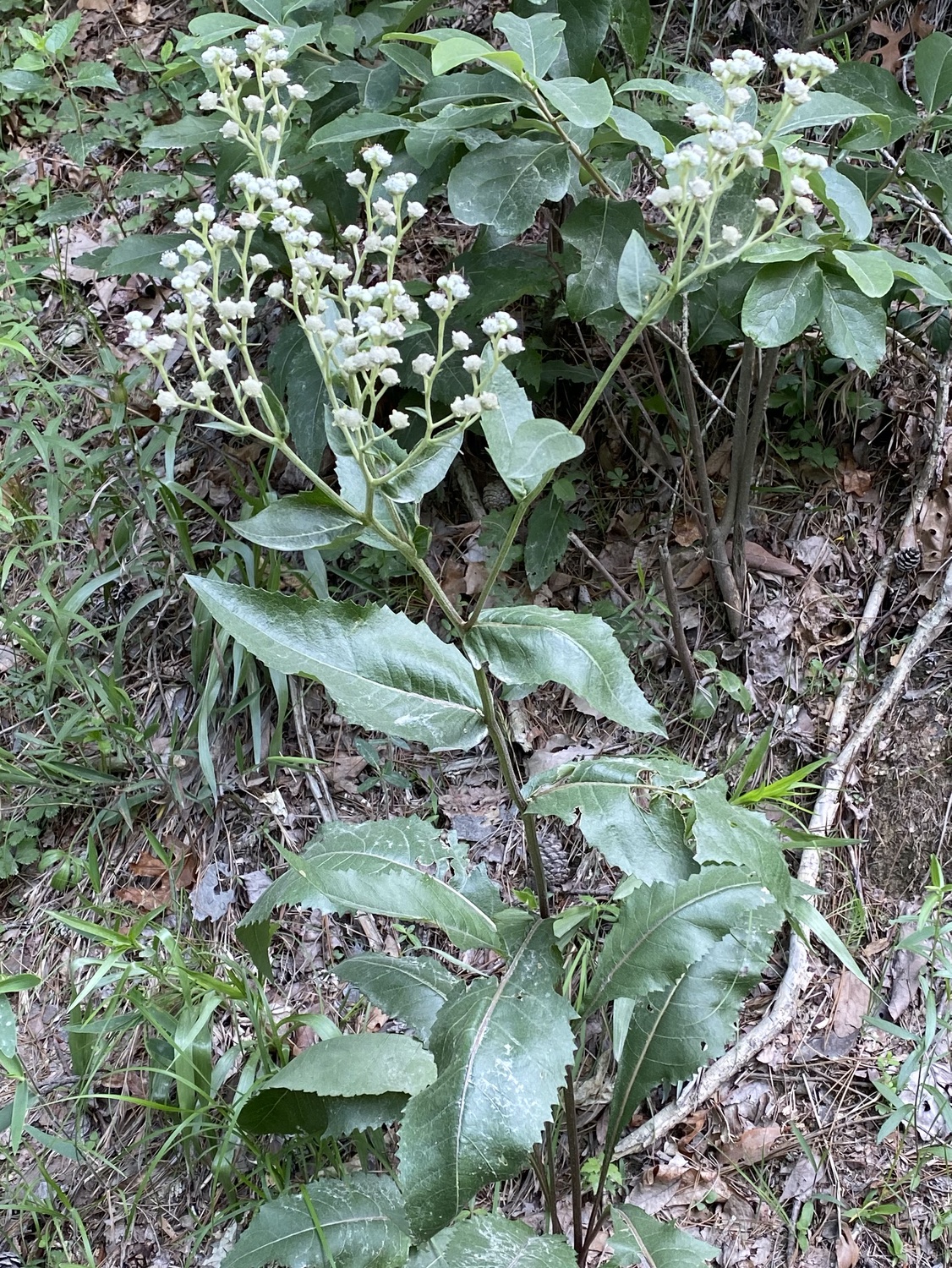
Ox-Eye Daisy (Leucanthemum vulgare)
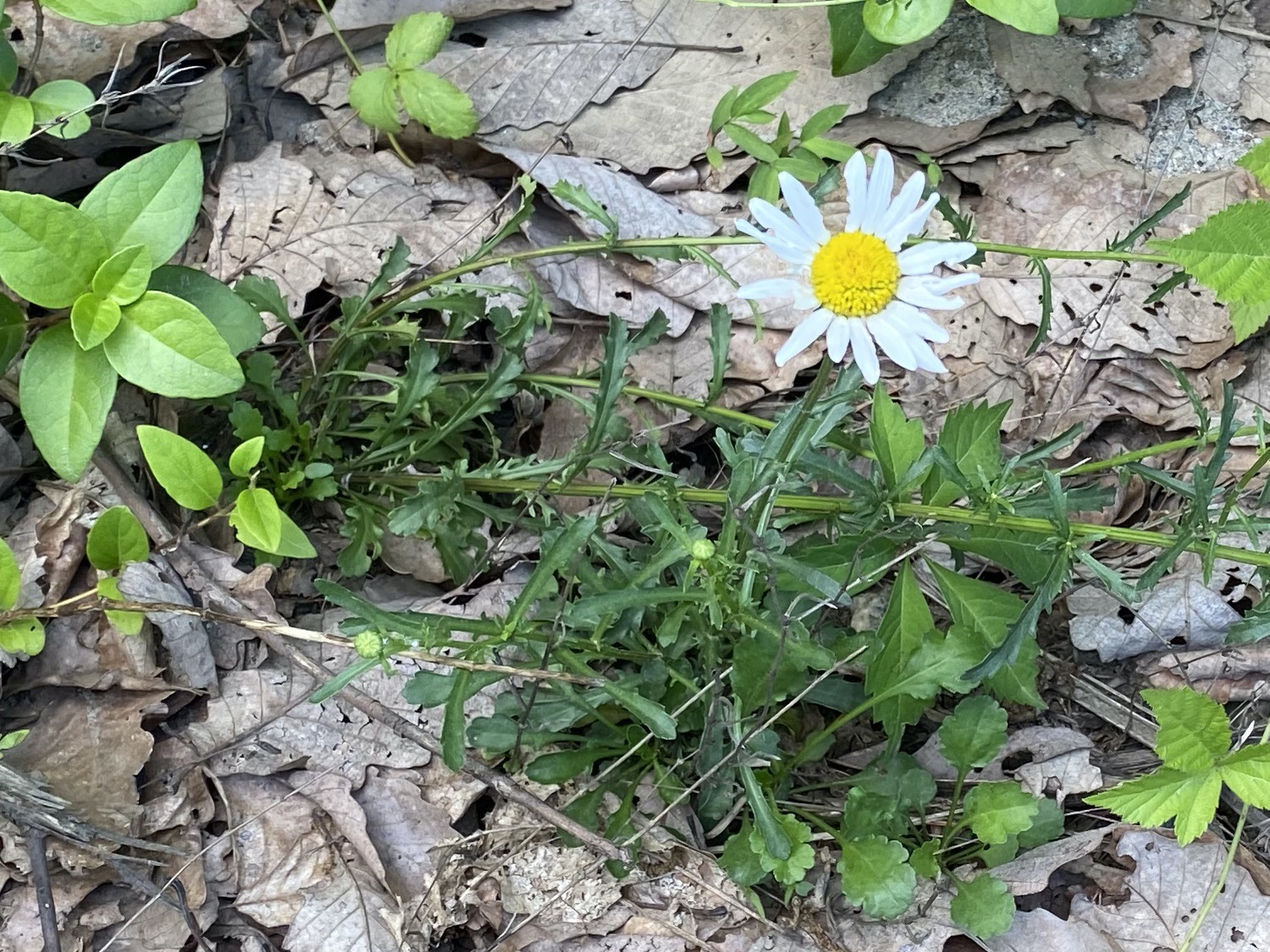
Carolina Horse-Nettle (Solanum carolinense)
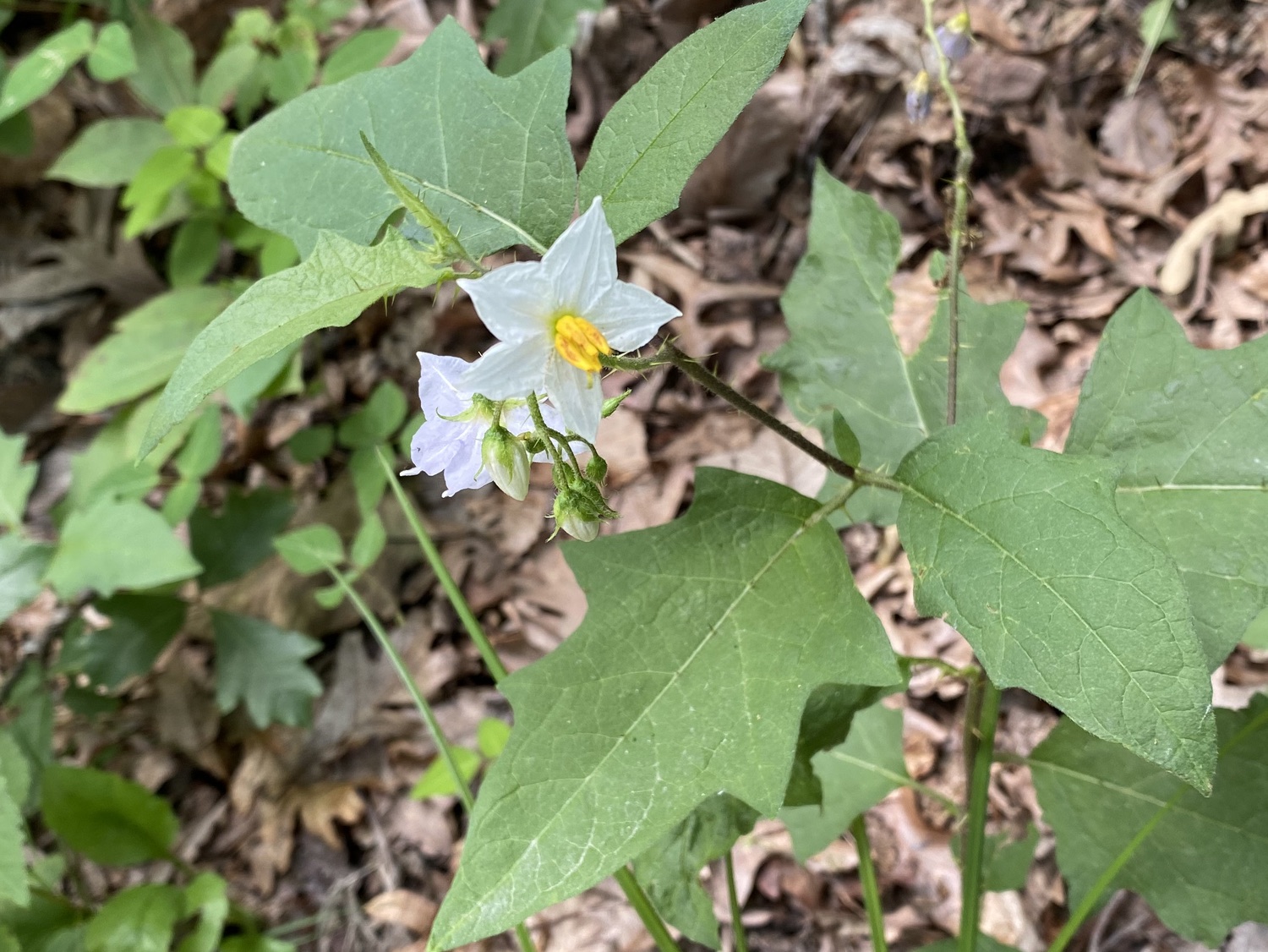
Highbush Blackberry (Rubus pensilvanicus). A few blooms are left, but most plants are fruiting by now.
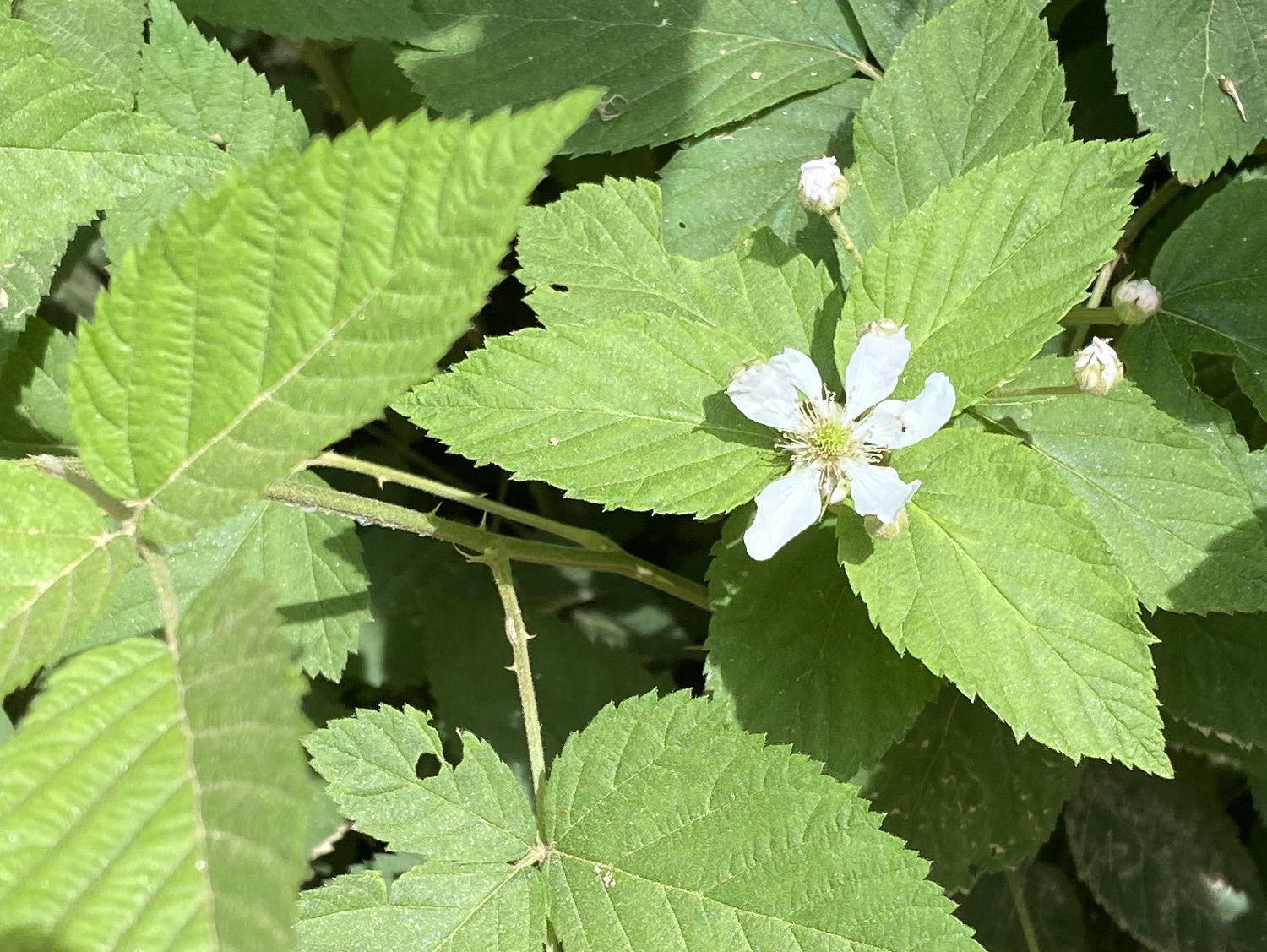
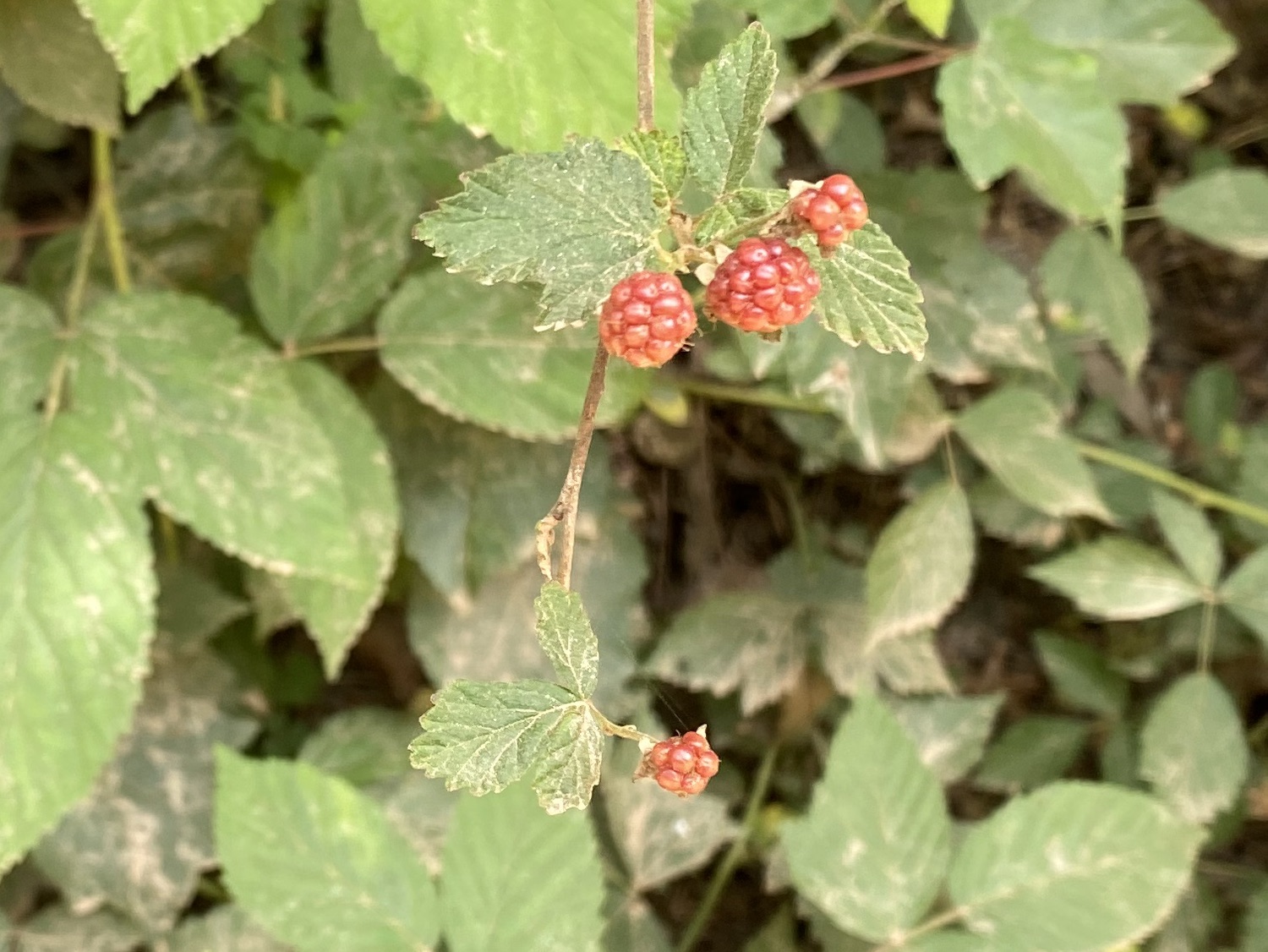
Pokeweed (Phytolacca americana, also called Poke Salad). This is just a small example of the flowers on this tall, large-leafed plant. Many plants have clusters of flowers up to 8" long, which eventually turn to purple berries.
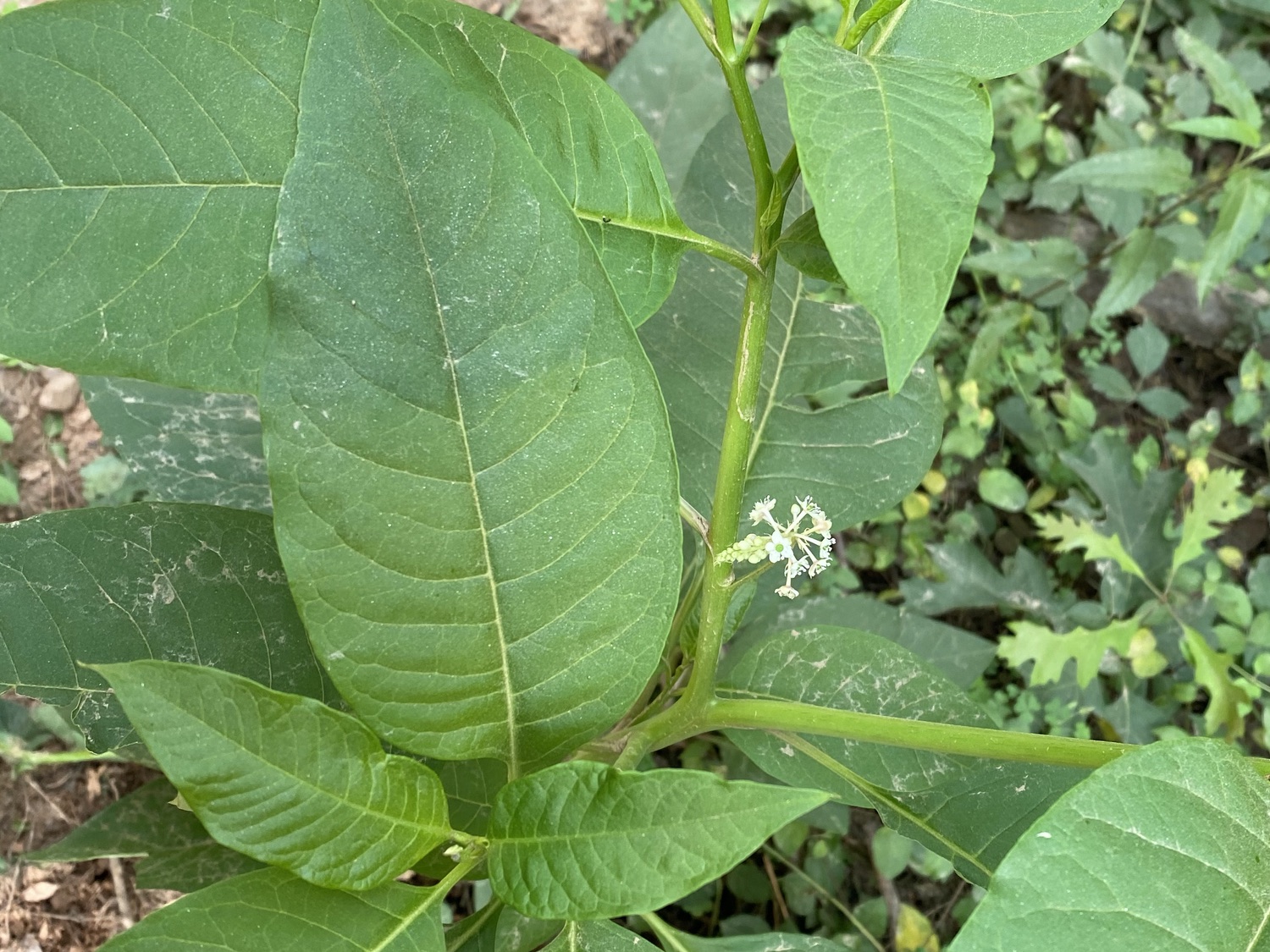
Mysteries
These final four have me stumped.
Several clumps of these ruffly pink flower were growing along the road, low to the ground and close to the parking lot. The stems are quite thorny, and it reminds me of a rose. Mom tells me they are roses that were planted but have gone wild, and I believe her!
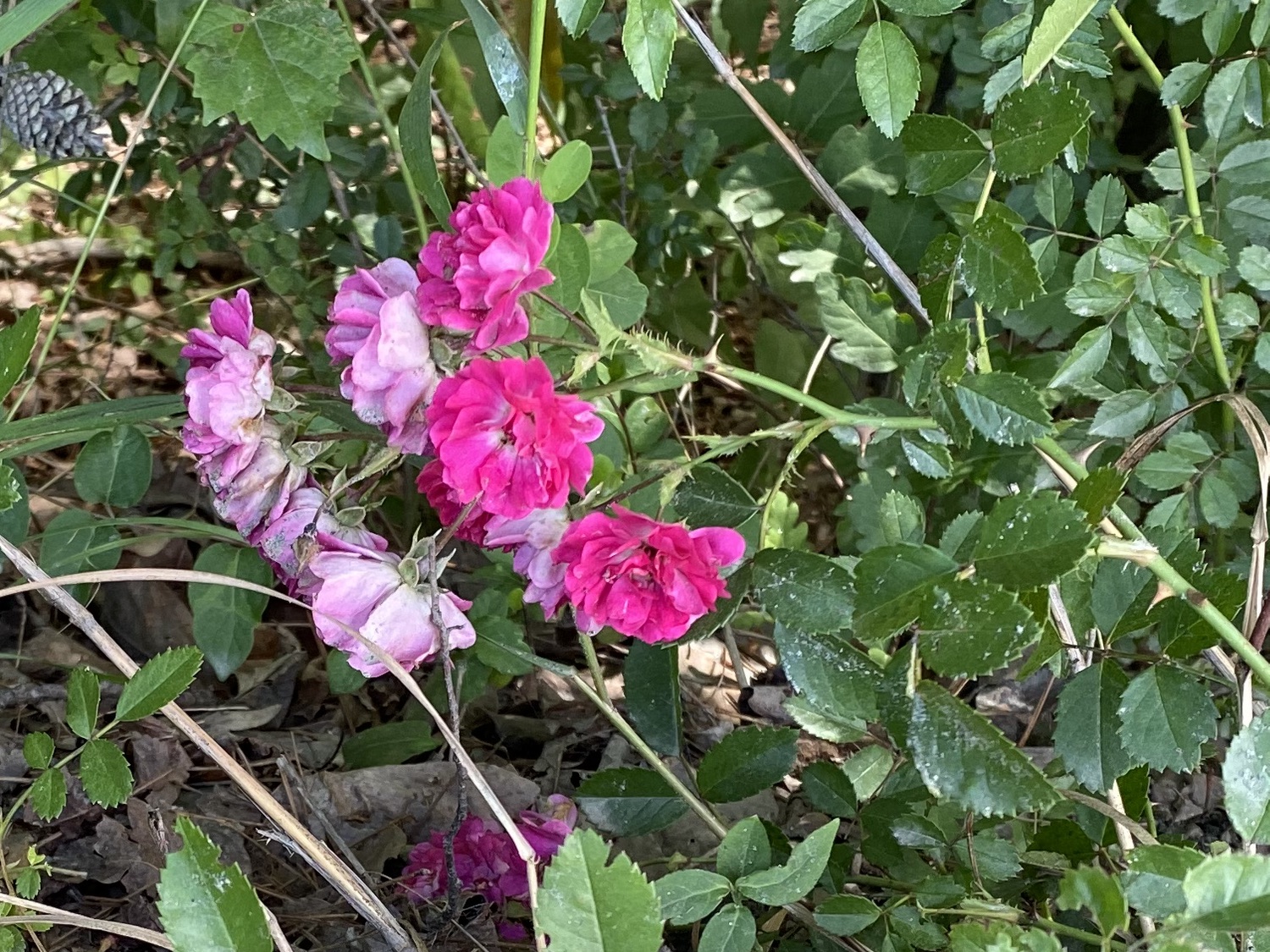
The yellow flowers are tough in general, but I’m not sure what to do with this one. It looks similar to a Rubeckia, but its leaves are opposite, not alternate as they are for Rudbeckia. Some of the petals have toothed tips, suggesting a Coreopsis. (See next week’s post: I wish I had a photo of the back side of these flowers, which helps to distinguish flowers that are so similar from the front).
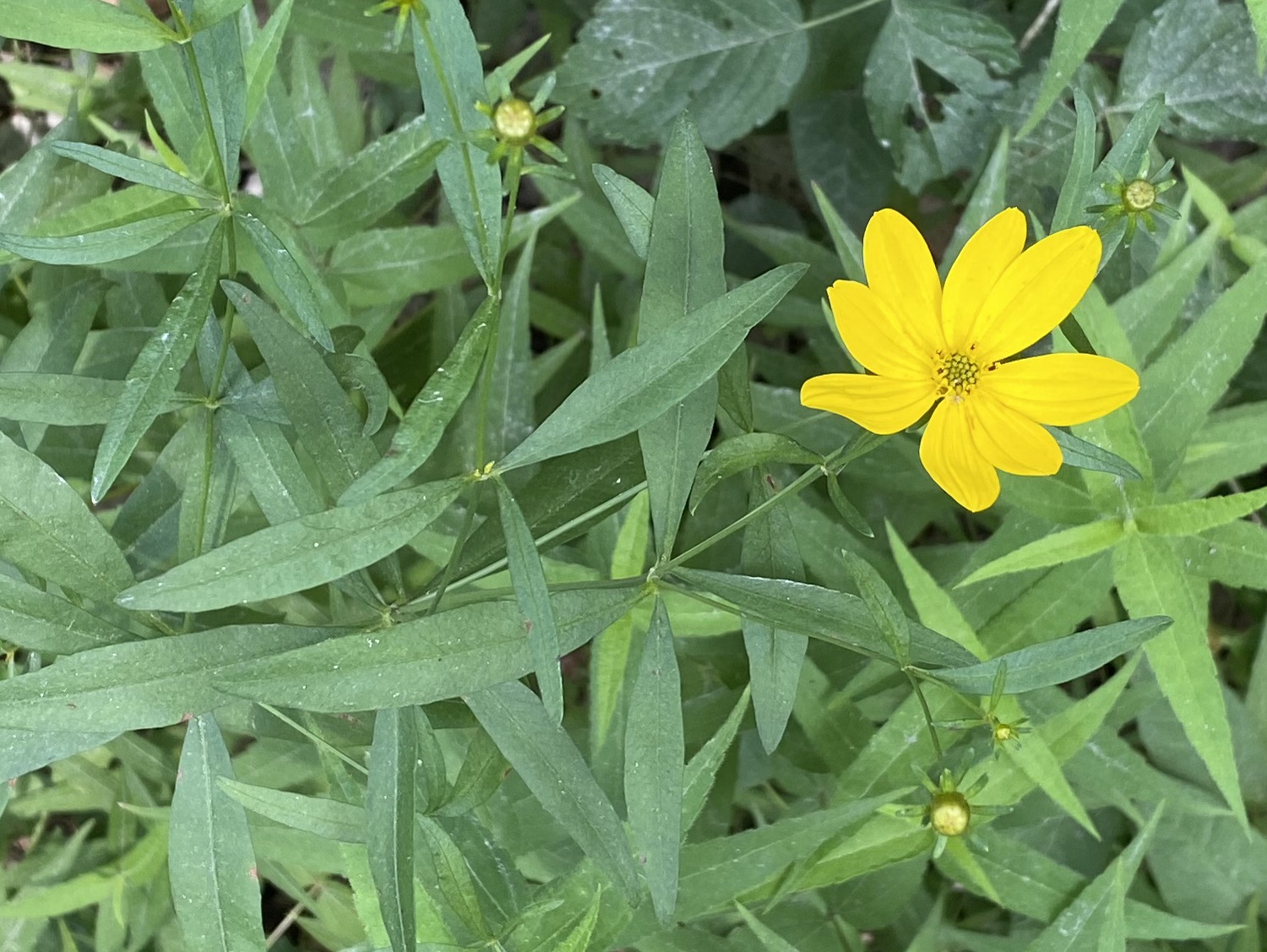
Clusters of white flowers are also tough, and again, it seems like these leaves of this would be distinctive. (See next week’s post: these are Wild Hydrangea).
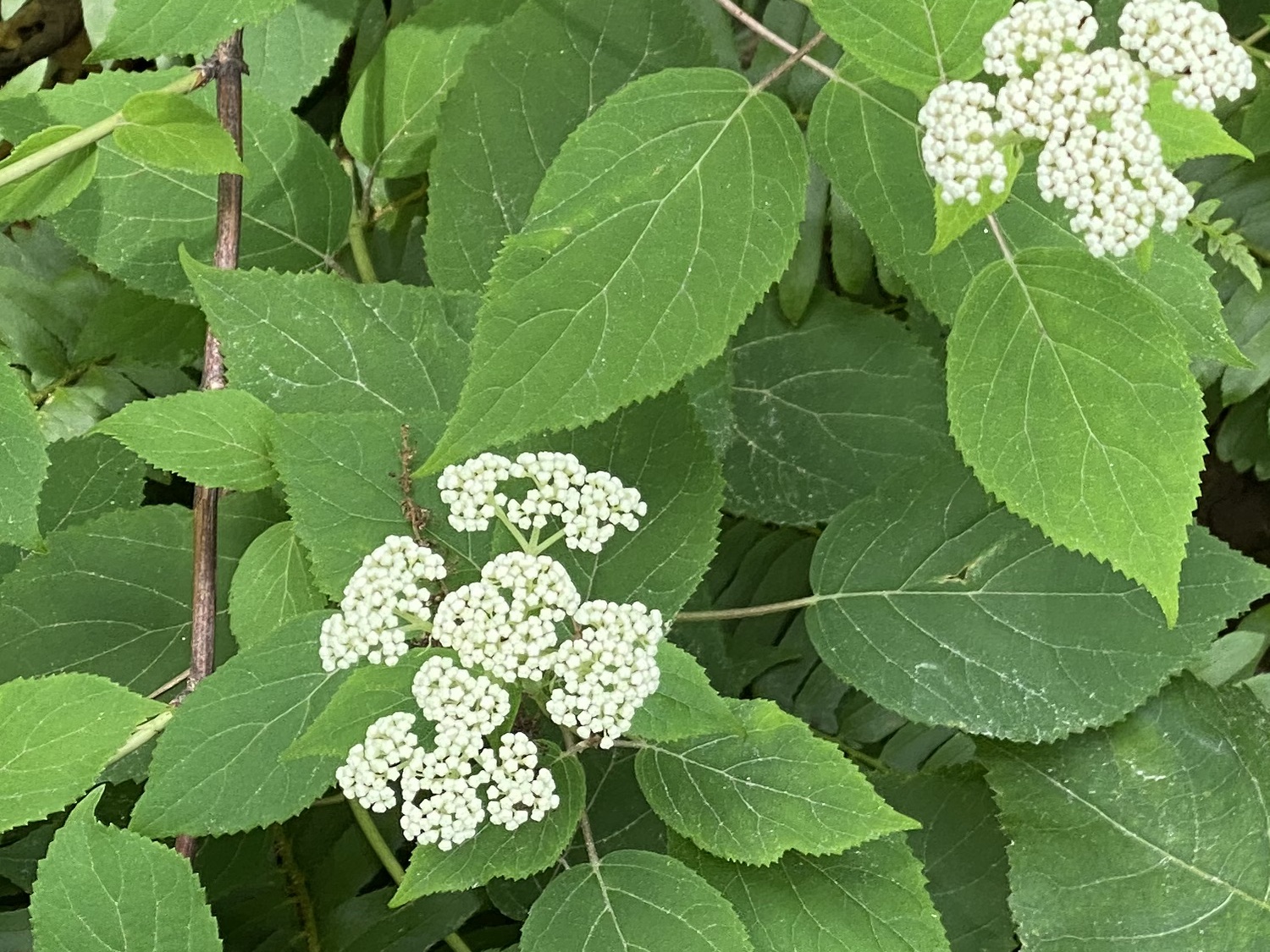
These small flowers might be past they’re past their prime, missing a few petals. (See next week’s post: they might also be the Narrow-Leaf White-Topped Aster).
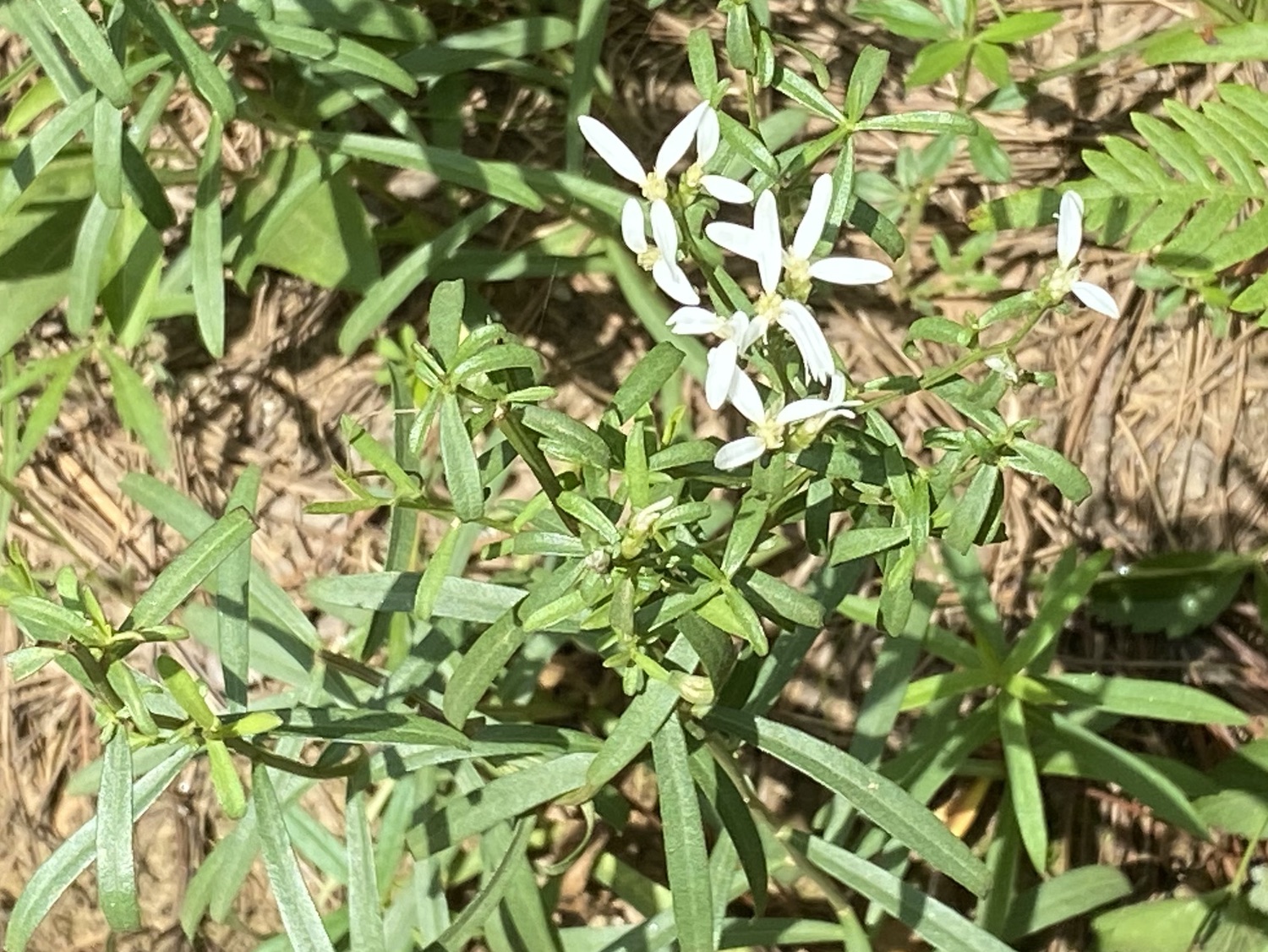
References
Chafin, L.G. 2016. Field Guide to the Wildflowers of Georgia and Surrounding States. The University of Georgia Press, Athens, Georgia.
Duncan, W.H., and M.B. Duncan. 1999. Wildflowers of the Eastern United States. The University of Georgia Press, Athens, Georgia.